TheBigMarketing.com

Sephora Marketing Strategy 2024: A Case Study
Sephora , the global beauty retailer with over 2700 stores in 35 countries, has established itself as a leader in the industry through its innovative marketing strategies. In this case study, we dive into Sephora’s marketing strategy for 2024, analyzing their successful campaigns and digital dominance.
Key Takeaways:
- Sephora’s marketing strategy focuses on delivering exceptional in-store and digital experiences.
- They target a diverse audience and continuously expand their offerings to cater to various beauty needs.
- Sephora’s successful marketing campaigns celebrate diversity, self-expression, and inclusivity .
- They excel in digital marketing , leveraging technology and social media platforms to engage with customers.
- Their customer loyalty and rewards program, Beauty Insider, drives repeat purchases and collects valuable data.
About Sephora
Sephora , a global beauty retailer, has established itself as a formidable presence in the beauty industry. Owned by LVMH Moet Hennessy Louis Vuitton , Sephora offers a curated selection of emerging favorites, trusted classics, and their own line, Sephora Collection . With a strong focus on innovation and inclusivity , Sephora continues to expand its offerings to cater to the diverse beauty needs of its customers.
As a brand under the umbrella of LVMH Moet Hennessy Louis Vuitton , Sephora benefits from the conglomerate’s extensive resources and industry influence. This association further enhances Sephora’s reputation and enables the brand to leverage its global reach.
Sephora Collection , a line of products developed in-house by Sephora, has gained popularity for its high-quality and affordable options. By offering their own line alongside other beauty brands, Sephora provides customers with a comprehensive and diverse range of products to choose from.
Sephora’s commitment to innovation can be seen in its various endeavors, such as integrating technology into the customer experience. The brand’s emphasis on inclusivity is reflected in its dedication to serving a diverse range of beauty needs.
With its strong industry presence and customer-centric approach, Sephora continues to solidify its position as a leader in the beauty retail space.
Sephora’s Marketing Strategy
Sephora has implemented a strategic marketing approach that targets women in their pre-teen to middle-age years who have a keen interest in luxury beauty and personal care products. By understanding their target audience , Sephora has positioned itself as a leader in the retail industry, continuously expanding its reach by opening new stores worldwide and providing unmatched assisted self-service.
One of Sephora’s key marketing strategies is its focus on connecting with customers through reward programs, influencer collaborations, and innovative campaigns. This strategy aims to create a personalized and engaging experience that resonates with their target audience .
Target Audience
- Women in their pre-teen to middle-age years
- Interested in luxury beauty and personal care products
Positioning
Sephora has positioned itself as a leader in the retail industry through several key factors:
- Assisted self-service: Sephora offers a unique shopping experience that combines self-service with knowledgeable beauty advisors . This approach empowers customers while providing expert guidance.
- Continuous expansion: Sephora consistently rolls out new stores globally, demonstrating its commitment to reaching customers worldwide and remaining at the forefront of the industry.
Through these strategic initiatives and a deep understanding of their target audience , Sephora has successfully positioned itself as the go-to destination for luxury beauty products. By connecting with customers through various channels and continuously innovating, Sephora sets itself apart from competitors and maintains its industry leadership.
Successful Marketing Campaigns
Sephora has established a strong reputation for its innovative and impactful marketing campaigns. By understanding the power of storytelling and embracing diversity, Sephora has successfully connected with its target audience and created a lasting impact in the beauty industry.
Black Beauty is Beauty
One of Sephora’s notable campaigns is “Black Beauty is Beauty,” which celebrates Black traditions and inventions in the beauty industry. This campaign aims to promote inclusivity and highlight the rich contributions of Black culture to the world of beauty. Through powerful visuals and engaging storytelling, Sephora has received widespread acclaim for championing diversity and representation within the industry.
The Unlimited Power of Beauty
Another impactful campaign from Sephora is “The Unlimited Power of Beauty.” This campaign showcases diverse beauty and self-expression, emphasizing that beauty has no limits or boundaries. By featuring individuals from different backgrounds, body types, and gender identities, Sephora aims to inspire self-confidence and encourage everyone to embrace their unique beauty. This campaign has resonated with consumers worldwide, reinforcing Sephora’s commitment to inclusivity.
Rare Beauty by Selena Gomez
Sephora also collaborated with Selena Gomez to launch Rare Beauty, a brand that promotes self-acceptance and individuality. This partnership combines Selena Gomez’s influence and Sephora’s expertise to create a line of products that empower individuals to celebrate their own beauty. Rare Beauty has gained significant attention for its mission-driven approach and commitment to supporting mental health initiatives.
Through these successful campaigns, Sephora has positioned itself as a leader in promoting diversity and inclusivity in the beauty industry. By embracing the power of storytelling and partnering with influential figures like Selena Gomez, Sephora continues to redefine beauty standards and inspire individuals to express themselves authentically.
Digital Marketing Strategies
Sephora’s digital marketing strategies play a crucial role in their success, as they effectively integrate technology into the customer experience. By leveraging various online platforms and innovative techniques, Sephora engages with its audience, enhances interactions, and personalizes the beauty shopping journey. Let’s explore some of the key digital marketing strategies employed by Sephora:
Utilizing Social Media Platforms
Sephora understands the power of social media in reaching and connecting with customers. They actively maintain a presence on popular platforms such as YouTube, Instagram, and Pinterest. Through visually captivating content, Sephora showcases their products, offers tutorials, and engages with their followers, building a loyal and active community.
Virtual Makeup Try-Ons
To bridge the gap between online and in-store experiences, Sephora provides virtual makeup try-on tools. Customers have the opportunity to digitally explore various makeup products, experiment with different looks, and make informed purchasing decisions from the comfort of their own homes. This innovative feature contributes to a seamless and interactive shopping experience.
Online Beauty Consultations
Sephora takes customer support to the next level by offering online beauty consultations. Through live chat or video calls, customers can seek personalized advice from Sephora’s beauty experts. These consultations enable customers to receive tailored recommendations, addressing their specific concerns and preferences. This personalized approach ensures a high level of customer satisfaction and loyalty.
Through their digital marketing efforts , Sephora has successfully integrated technology into their business model, creating a unique and immersive online experience for beauty enthusiasts. By staying ahead of the curve with their innovative strategies, Sephora continues to solidify its position as a leader in the beauty retail industry.
Customer Loyalty and Rewards Program
Sephora’s Beauty Insider rewards program plays a pivotal role in fostering customer loyalty . This tier-based system offers a range of enticing benefits, including discounts, gifts, and exclusive events, based on customers’ spending. By incentivizing continued engagement, the Beauty Insider program not only rewards loyal customers but also collects valuable data that enables personalized marketing strategies.
One of the key advantages of Sephora’s loyalty program is the access it provides to exclusive products . For instance, the collaboration between Sephora and pop icon Rihanna resulted in the groundbreaking Fenty Beauty line, available exclusively at Sephora. These highly sought-after products further contribute to the brand’s appeal and cultivate a strong sense of loyalty among customers.
Benefits of Sephora’s Beauty Insider Program:
- Discounts on purchases at Sephora
- Free beauty gifts, samples, and limited-edition products
- Access to exclusive events and beauty workshops
- Personalized product recommendations and offers
- Early access to new products and launches
By establishing a strong rewards program that not only offers enticing incentives but also fosters a sense of exclusivity, Sephora has successfully created a loyal customer base that keeps coming back for more.
Collaboration and Innovation
Sephora understands the power of collaboration and innovation in staying at the forefront of the beauty industry. By partnering with influencers, celebrities, and other beauty brands, Sephora creates exclusive and highly sought-after products and collections. These collaborations generate significant buzz and excitement, attracting new customers and keeping the brand relevant in a competitive market.
One notable collaboration by Sephora is their partnership with Rihanna’s Fenty Beauty, which has revolutionized the industry with its inclusive range of shades and high-quality formulas. This collaboration not only showcases Sephora’s commitment to diversity and representation but also generates immense success and customer loyalty .
Another example of Sephora’s commitment to innovation is their Sephora Collection line. Through extensive research and development, Sephora has created a line of high-quality, affordable beauty products that cater to a diverse range of preferences and demographics. This innovation allows Sephora to offer an extensive range of options to their customers, making luxury beauty more accessible to all.
In addition, Sephora continuously seeks out new ways to enhance the customer experience through technology. They invest in research and development to bring cutting-edge tools, such as virtual makeup try-ons, into their stores and online platforms. These digital innovations provide customers with interactive and personalized experiences, setting Sephora apart from traditional retailers.
Benefits of Collaboration and Innovation:
- Generates buzz and attracts new customers
- Keeps the brand relevant and ahead of trends
- Allows for the creation of exclusive products and collections
- Enhances the customer experience through innovative technologies
- Makes luxury beauty more accessible to diverse demographics
Featured Collaboration:
Sephora’s collaboration with Rihanna’s Fenty Beauty showcases their commitment to diversity and inclusive beauty.
Sephora’s Collaborations
In-store experience and layout.
Sephora’s brick-and-mortar stores offer an immersive and interactive shopping experience. The store layout is designed to encourage exploration and discovery, with knowledgeable beauty advisors providing personalized advice and a wide range of services. Sephora’s unique approach to in-store experience sets them apart from traditional retail models.
When you step into a Sephora store, you enter a world of beauty possibilities. The store design is carefully curated to create an inviting and engaging environment. The layout is spacious, allowing customers to browse freely and discover new products. The strategic placement of different beauty categories, such as skincare, makeup, and fragrance, ensures a seamless shopping experience.
One of the standout features of a Sephora store is the interactive elements. Digital screens and touchscreens are strategically placed throughout the store, providing access to product information, tutorials, and customer reviews. Customers can explore the latest trends, watch beauty tutorials, and make informed purchasing decisions.
Beauty advisors play a crucial role in enhancing the in-store experience. These expert consultants are well-versed in beauty products, trends, and techniques. They are dedicated to providing personalized advice, helping customers find the perfect products for their unique needs and preferences. With their extensive knowledge and passion for beauty, Sephora’s beauty advisors ensure that every customer receives exceptional service and guidance.
Furthermore, Sephora stores offer a wide range of services that go beyond traditional retail. From mini-makeovers to skincare consultations, customers can enjoy professional beauty treatments and recommendations. This interactive and service-oriented approach creates a memorable and enjoyable shopping experience, fostering customer loyalty and satisfaction.
Services Offered in Sephora Stores
Sephora’s commitment to delivering a holistic and engaging in-store experience sets them apart as an industry leader. By combining innovative store design, interactive technology, and knowledgeable beauty advisors, Sephora ensures that every visit to their stores is an unforgettable and empowering journey in the world of beauty.
Digital Integration and Online Sales
As part of Sephora’s commitment to providing a seamless customer experience, the beauty retailer has embraced digital integration to complement its physical stores. In-store iPads and touchscreens strategically placed throughout the stores allow customers to access detailed product information, tutorials, and reviews at their fingertips.
This digital integration not only enhances the in-store experience but also empowers customers to make well-informed purchasing decisions. By providing easy access to relevant information, Sephora ensures that customers can explore and discover products with confidence.
Virtual Try-Ons: The Future of Beauty Shopping
A standout feature of Sephora’s online experience is the ability for customers to virtually try on makeup products before making a purchase. This innovative technology leverages augmented reality to overlay virtual makeup onto a customer’s face, allowing them to visualize the products in real-time.
Virtual try-ons revolutionize the beauty shopping experience by eliminating the need for physical samples and providing an accurate representation of how products will look on different skin tones. Customers can experiment with a wide range of shades, finishes, and styles, enabling them to make personalized and confident choices.
With Sephora’s virtual try-ons , customers can indulge their creativity and explore new looks, all from the comfort of their own homes. This technology bridges the gap between online and in-store shopping, delivering an immersive digital experience tailored to individual preferences.
Engaging Through Social Media Channels
Sephora recognizes the importance of social media in connecting with its customer base and driving engagement. The beauty retailer maintains a strong presence across popular social media channels such as Instagram, YouTube, and Pinterest.
Through these platforms, Sephora not only showcases its products but also provides educational content, beauty tips, tutorials, and behind-the-scenes glimpses into the world of beauty. By leveraging social media channels , Sephora establishes a direct line of communication with its customers, fostering a sense of community and promoting ongoing engagement.
Whether it’s makeup tutorials, product reviews, or user-generated content, Sephora utilizes social media to create a dialogue, gather feedback, and respond to customer inquiries. This interactive approach reinforces Sephora’s commitment to customer satisfaction and strengthens its position as a beauty industry leader.
Company Values and Philanthropy
Sephora is a beauty retailer that upholds a strong set of company values and is dedicated to making a positive impact in the world. As part of their mission, Sephora promotes inclusivity and embraces diversity in all aspects of their business. They actively support the idea of “democratic design” by offering a wide range of products that cater to different price points, functionalities, aesthetics, and sustainability standards.
One of Sephora’s core values is inclusivity. They believe that beauty should be accessible to all, regardless of age, gender, race, or background. Sephora actively features brands and products that celebrate diverse beauty, ensuring that customers can find products that meet their unique needs and preferences.
Moreover, Sephora is committed to advancing racial equity in the beauty and retail sectors. They recognize the importance of representation and have taken significant steps to showcase and support underrepresented communities. Sephora’s campaigns and partnerships aim to amplify diverse voices, celebrate cultural heritage, and break down barriers within the industry.
In alignment with their commitment to philanthropy, Sephora also actively supports various charitable initiatives. Through their Sephora Stands program, they provide funding, mentorship, and resources to support diverse entrepreneurs in the beauty industry. Sephora’s philanthropic efforts extend beyond the beauty world as they actively engage in social and environmental causes, working towards a more inclusive and sustainable future.
Sephora’s Commitment to Inclusivity
Sephora believes that everyone deserves to feel beautiful and welcomed. Their commitment to inclusivity is visible in various aspects of their business, from the brands and products they carry to the diverse array of beauty advisors and experts they employ.
As an industry-leading beauty retailer, Sephora understands the importance of representation. They are actively working to address the historical lack of diversity and inclusivity within the beauty industry. By featuring a wide range of brands owned by people of different ethnicities and backgrounds, Sephora ensures that customers have access to products that cater to their unique needs.
Sephora also values customer feedback and actively seeks input from their diverse customer base. Through initiatives like the Sephora Beauty Insider Community, they create a space for customers to share their experiences, offer suggestions, and participate in discussions about inclusivity and racial equity in the beauty industry.
Through their dedication to inclusivity and racial equity , Sephora is setting a positive example for the beauty and retail sectors. By showcasing a wide range of brands and actively supporting diverse voices, they are championing a more inclusive and representative industry.
Sephora’s marketing strategies have propelled the brand to unparalleled success in the beauty industry. By prioritizing exceptional in-store and digital experiences, Sephora has crafted a unique and personalized customer journey that fosters loyalty and drives sales. Businesses aspiring to replicate Sephora’s triumph can take inspiration from their focus on building a strong rewards program, strategic collaborations, and continuous innovation.
The key to Sephora’s marketing success lies in their ability to create an immersive environment both in-store and online. Through interactive shopping experiences and the expertise of knowledgeable beauty advisors, Sephora establishes a deep connection with its customers, encouraging exploration and discovery. By embracing technology and providing virtual try-ons and online consultations, Sephora delivers convenience and engagement to a wide customer base.
In addition, Sephora’s strong customer base is cultivated through their Beauty Insider rewards program. This tier-based system not only incentivizes purchases but also collects valuable data for personalized marketing, deepening the bond between Sephora and its loyal customers. Furthermore, Sephora’s strategic collaborations with influencers, celebrities, and beauty brands generate buzz and attract new customers, keeping the brand at the forefront of the industry.
To replicate Sephora’s success and build a strong customer base , businesses must prioritize creating exceptional experiences, developing a robust loyalty program, and embracing innovative approaches. By focusing on these key strategies, companies can establish themselves as leaders in their respective industries, just as Sephora has done in the competitive beauty market.
What is Sephora’s target audience?
Sephora targets women in their pre-teen to middle-age years who are interested in luxury beauty and personal care products.
What are some of Sephora’s successful marketing campaigns?
Sephora has launched successful campaigns such as “Black Beauty is Beauty,” “The Unlimited Power of Beauty,” and the partnership with Selena Gomez for Rare Beauty.
How does Sephora excel in digital marketing?
Sephora integrates technology by offering virtual makeup try-ons, online beauty consultations, and engaging with customers on social media platforms like YouTube, Instagram, and Pinterest.
What is Sephora’s Beauty Insider rewards program?
Sephora’s Beauty Insider rewards program is a tier-based system that offers discounts, gifts, and exclusive events based on customer spending, fostering loyalty and providing personalized marketing.
How does Sephora collaborate with influencers and brands?
Sephora collaborates with influencers, celebrities, and beauty brands to create exclusive products and collections, generating buzz and attracting new customers.
What is the in-store experience like at Sephora?
Sephora’s brick-and-mortar stores offer an immersive and interactive shopping experience, with knowledgeable beauty advisors providing personalized advice and a wide range of services.
How does Sephora integrate digital and online sales?
Sephora utilizes in-store iPads and touchscreens, virtual makeup try-ons, and online beauty consultations. They also engage with customers through social media channels like Instagram, YouTube, and Pinterest.
What are Sephora’s company values and philanthropic efforts?
Sephora promotes inclusivity and racial equity in the beauty and retail sectors through its campaigns and partnerships, and prioritizes balance, aesthetics, and sustainability in its product offerings.
Related Posts

Editorial Team
Shake shack marketing strategy 2024: a case study, skims marketing strategy 2024: a case study.
Sephora: The Omnichannel Strategy Which Redefined CX in Cosmetics
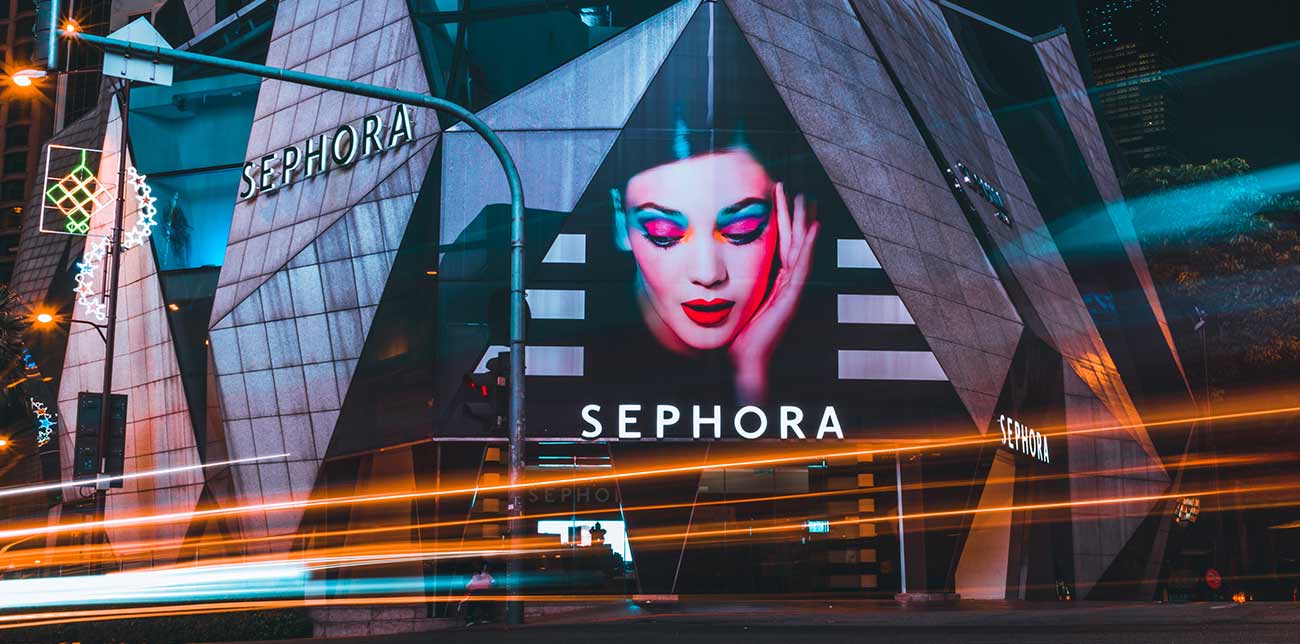
While many other brick-and-mortar high-street brands have crumbled throughout the decades, luxury cosmetic giants, Sephora have gained a stronghold in the competitive cosmetics retail landscape. Survival has been, in part, a result of Sephora’s omnichannel strategy, which ultimately redefined the cosmetics shopping experience.
From its humble beginnings as a small perfumery in the French town of Limoges, Sephora is firmly in the retail spotlight as one of the leading brands of personal care and luxury beauty products. Like Fartech (which we covered in this case study) , Sephora’s business model is geared towards a diverse range of customer segments.
In this case study, we take a deep-dive into Sephora’s omnichannel marketing strategy and examine how the blend of in-store experiences with digital platforms has transformed the customer journeys and sustained Sephora’s growth strategy.
Table of Contents
- The History of Sephora
- Awards Sephora has won to date
- The key success factors that drive Sephora’s growth strategy
- Authentic Customer Experience-focused mentality
- Exceptional Omnichannel Strategy
- Omni-Channel Company Culture
- Turning Data into Growth
- Data-driven Mobile strategy
- “Augmented” Retail Strategy
- Solid Business Continuity & Crisis Management Strategy
- How Sephora’s omnichannel strategy redefined customer experience in cosmetics retail?
- Example #1: Sephora’s Visual Artist feature
- Example #2: Multi-Purpose & content-rich Mobile app
Example #3: Building a stellar community
- Sephora’s eCommerce website
- Analyzing Sephora’s Home Page
- Analyzing Sephora’s Category Page
- Analyzing Sephora’s Product Page
- Analyzing Sephora’s Checkout Process
Go omnichannel or go home (probably)
The history of sephora .
Sephora has always been an innovative brand. When Dominique Mandonnaud opened his first store in Limoges, France (known then as Shop 8), products were grouped by type rather than brand. This allowed customers to try more products they were drawn to.
The company’s first Paris store opened in 1970, and by 1998, Sephora was among the industry-leading champions for diversity, inclusivity, and empowerment. The business quickly spread its presence across Europe and the United States. Today, the Sephora at Champs Élysées attracts over six million people a year.
Owned by LVMH Moët Hennessy Louis Vuitton, the world’s leading luxury goods group, Sephora stores feature a variety of beauty products from more than 300 brands. No wonder Sephora’s new tagline and manifesto is, “We Belong to Something Beautiful”!

Awards Sephora has won to date
Given Sephora’s rise to retail prominence, it’s no surprise to see they have picked up numerous awards on their journey. To date, the company has garnered 19 awards, but we expect there are more to follow.
- Women’s Wear Daily “Specialty Retailer of the Year” (2010)
- Beauty 2.0 Awards “Best Pinterest” (2013)
- Beauty 2.0 Awards “Best e-Commerce Website” (2013)
- Beauty 2.0 Awards “Best Blog by Beauty Brand” (2013)
- World Retail Congress Retailer of the Year Award (2018)
- Glossy Awards Innovation Team of the Year award (2018)
- Glossy Awards Best Campaign by a Traditional Beauty Brand (2018)
- SHEFinds’ “Best New Beauty Products” (2019)
- HelloGiggles “Beauty Crush Awards” (2019)
- Cosmopolitan’s “The Cosmo Makeup Awards” (2019)
- 2 x Women’s Health “Beauty Awards” (2019)
- The Knot “Beauty Awards” (2019)
- Cosmopolitan’s “Skincare Awards” (2019)
- Parents “Beauty Awards” (2019)
- Cosmopolitan’s “Holy Grail Beauty Awards” (2020)
- ESSENCE’s “Best in Black Beauty” (2020)
- SheFinds “Best New Beauty Awards” (2020)
- Parents “Beauty Award” (2020)
- Allure Best Of Beauty (2020)
Sephora has also featured in numerous indexes, “best in class” lists, and honors.

The key success factors that drive Sephora’s growth strategy
In their own words, Sephora is “a leader of prestige omni-retail.” The company’s goal is to create a shopping experience that enables beauty and cosmetic customers to purchase products confidently.
Sephora’s marketing team has taken retail to the next level since they have mastered the art of bringing both the offline and the online customer journey into a holistic shopping experience.
Between 2017 and 2019, Sephora consistently reached revenues of $6 billion, a near 50% increase from just five years prior when the personal care giant was only registering $4 billion.
Sephora’s retail strategy can be honed down to 7 key strategies.
Key success factor #1: Authentic customer experience
The Sephora business strategy centers around the customer shopping experience. Their in-store set-up is a digital playground for beauty enthusiasts. Utilizing various mobile technologies, screens, and customer-focused sales tactics, Sephora’s takes advantage of new-generation digital technologies such as augmented reality. Store assistants use iPads to showcase the multitude of shades and colors so customers can try before they buy.
Key success factor #2: Exceptional omnichannel strategy
Sephora was among the early adopters of an omnichannel strategy as part of their digital marketing efforts. Central to the Sephora marketing strategy is a mobile app that provides customers with a central hub where they can access all things related to beauty, cosmetics, and skincare.
With a bevy of new products, video tutorials, celebrity news, and fashion trends directly within the mobile app that consistently encourages customers to return, Sephora’s digital marketing strategy keeps its audience informed, up-to-date, and hungry for more.
Moreover, Sephora has nailed loyalty marketing as well. By nurturing customers who spend 15x more than the average customer , Sephora has built a seamless, unified, and personalized customer experience by launching groundbreaking technologies like ColorIQ , ‘ Smell O Vision,’ and famous Sephora Visual Artist.

Key success factor #3: Omni-Channel company culture
Sephora’s retail strategy uses data and technology to bring the shopping experience to life. But the “secret sauce” behind its omnichannel success is simple yet far too difficult to copy. In 2018, the company went one step further by merging its digital and physical retail teams and developed a world-class omnichannel approach.
By creating one team, Sephora focused on overall sales rather than prioritizing its eCommerce strategy. This purely omnichannel approach enables marketers to track the entire customer journey from online browsing to in-store interactions with sales representatives and over-the-counter sales. Sephora is one of the very few retailers globally which turned omnichannel business thinking into action.
Key success factor #4: Turning data into growth
Sephora recognized a large percentage of shoppers use personal smartphones to search for online reviews, recommendations and compare the price of products with their competitors.
Rather than treating personal devices as a threat, Sephora developed a retail strategy to take advantage of mobile technologies . With the help of Google Analytics 360 Suite, their analytics team was able to identify which online advertising was driving in-store purchases. The Sephora marketing strategy was born from this data, and sales from digital ads soared by 3x .
Key success factor #5: Data-driven mobile strategy
Given that most online searches take place on a mobile phone, Sephora saw the advantage of incorporating a mobile app to enhance their retail strategy.
The app is designed to provide its customers with valuable information such as reviews and emulate a sales associate to provide relevant product recommendations.
Being always data-driven, Sephora has foreseen the rise of mobile during the early 2010s by heavily investing in mobile technologies.
For example, Sephora was among the first brands launched in Apple’s Passbook in 2012, getting more than 87k app downloads per week. But was that a result of luck? Certainly not. Sephora knew that approximately 70% of its mobile users came from iOS devices, which is why it was quick to invest in Apple’s digital wallet.
Key success factor #6: “Augmented” retail strategy
Beauty and cosmetic shoppers consume video content across multiple devices. Sephora takes advantage by including tutorials and evocative images in their retail strategy by using brand ambassadors and micro-influencers on social networks and YouTube.
Sephora’s customer engagement strategy provides customers with access to valuable content. “Groups” and “Conversations” enabled Sephora to build a vibrant community of beauty aficionados. In-store digital components such as welcome screens, menus, and sales assistants armed with mobile devices help customers find the right product.
The amount of earned media Sephora from user-generated content (UGC) every month has no match in the cosmetics industry.
Key success factor #7: Solid business continuity & crisis management strategy
When stores were forced to close during the global pandemic, Sephora’s eCommerce strategy shifted to expand its online efforts to make it easier for customers to search for products from the comfort of their homes.
To enhance operational efficiency, Sephora tweaked its supply chain strategy across warehouse locations, inventory management, and automation. Sephora also took steps to align inventory with projected sales, thereby minimizing ‘out-of-stock’ products.
These business reflexes highlight bold business continuity skills that help the company overcome the tide.
How Sephora’s omnichannel strategy redefined customer experience in cosmetics retail?
Example #1: sephora’s visual artist feature .

With hundreds of products in each category, shopping for beauty products can be overwhelming. To help customers find the right products, Sephora incorporates augmented reality technology and ‘Color IQ,’ enabling customers to virtually ‘try before they buy.’
Sephora’s mobile app includes a Virtual Artist feature that scans the user’s face and matches their skin tone with a complimentary color. The technology incorporates artificial intelligence (AI) and uses facial recognition software that reveals how a particular product will look when applied by the customer.
Once customers decide on a particular product, they are directed to the relevant page to purchase the product online or locate the product in a store.
Example #2: Multi-Purpose & content-rich mobile app

Sephora gathers data through its mobile app, a source of customers’ in-store and online habits. Such data helps Sephora to make relevant product suggestions, which influences future purchasing decisions.
For example, Sephora sends notifications to individual customers that have searched for a specific item. The notification may inform customers when new products are in store, offers gifts on their birthday, and announces upcoming events. It also notifies when live events that
are happening when a customer is close by geographically.
Not only does Sephora’s augmented reality feature provide an innovative in-store experience, but its mobile app also enhances in-store experiences by using bar codes that provide product information, reviews, and personal purchase history upon scanning.

The Sephora business model focuses on enhancing the customer experience. An effective way of achieving this is to encourage its growing community of followers to share their experiences, knowledge, and tips.
On its website, the retail giants have created a Beauty Insider Community where users can gravitate to engage in friendly discussion, ask and answer questions, share photos, recommend products and connect with like-minded shoppers.
Sephora’s eCommerce website
Sephora is undoubtedly one of the most digital-savvy retailers around. To figure out what makes their online strategy masterful, we’ve analyzed 4-page templates to determine what’s hot and not.
A. Analyzing Sephora’s Home Page
Sometimes, the simple approach is the most effective. When you have an overwhelming choice of products like Sephora, a minimalistic web design is a way to go.

What we liked:
- Easy to navigate: Today’s shoppers do not have the patience to search for products. Sephora makes finding the most popular product categories instantaneous by linking to skincare, makeup, and fragrances directly from the Hero space. It’s the first thing shoppers see. The rest of the home page provides a list of Sephoras other products built into the company’s merchandise strategy.
- Engaging visuals: Sephora has opted for a simple white background overlaid with high-definition images of their product range. Without conflicting colors obscuring the PNGs, the images ping from the screen and are easy to recognize.
- Slick UX: The homepage uses pagination arrows, allowing visitors to view more products in the same category without leaving the homepage.
- Great use of top/smart bars: Sephora showcases its coupon-based promotions right at the top of the website, an excellent placement that’s highly visible yet non-intrusive to the rest of the browsing experience.
- Easy access to social media : Visitors can reach Sephora’s social media accounts with a single click. Placed within the website footer, the social media icons are easy to find.
What we didn’t like:
- Overwhelming: We’re nit-picking a little here, but the homepage showcases too many products. This may subtract from the shoppers’ overall exploring experience, as too many choices from the homepage can be overwhelming for users that are new to the site.
B. Analyzing Sephora’s Category Page
Ecommerce websites with massive product categories can sometimes be difficult for visitors to navigate. Sephora’s web designers have done a great job at neatly organizing the category pages’ structure and making it easy for shoppers to locate products.

What we liked:
- Well Organised Navigation Menu: Finding products when there are thousands to choose from could be a complete mind-bender for online shoppers. Yet, Sephora did a great job organizing categories across the upper bar menu and listing each sub-category in a sidebar menu on the category pages. Sephora adopts a nested structure by listing categories inside the category pages and numerous products under each category.
- Quick Look functionality: With one click, shoppers can look behind product images and discover the essential information about a particular item. Sephora has included a color palette and helpfully highlights which tones and shades are not in stock by marking it with an X.
- Personalized Suggestions: Simple but effective; a list of “holiday gifts” and products under $25 provide customers with shopping inspirations that ultimately lead to purchase conversions.
- Filter Options: To make it easier for their customers to explore the multitude of products, Sephora offers a useful filter function on the left-hand menu. It helps customers significantly narrow their purchasing options by quickly navigating to the preferred brands within the desired price range.
What we didn’t:
- Too “old school”: Despite Sephora being a rather innovative brand, the overall design of its eCommerce site and the UX seems to stick to the basics. The same goes for its product listing, which follows the typical design flow. While safe, it doesn’t provide anything surprising for the user to experience.
- Partial Visuals: Sephora’s website is not the most visually appealing despite its best efforts to include high-quality product images. The tips offered at the bottom of the category page – while useful for SEO – probably go unnoticed by customers only because it appears like a chunk of text. The placement doesn’t invite visitors to pay any attention to it despite offering some great tips. This section would be more enticing and aesthetically pleasing if there’s more emphasis on the visual and organization, like the example below.

C. Analyzing Sephora’s Product Page
Sephora’s product pages are intuitive, focuses on the products, and provide loads of detailed information. The attention it has paid listening to and answering consumer questions is remarkable – one of the best we have encountered.

- Product Videos: We noticed product videos before the page fold for numerous products. This is an excellent tactic to skyrocket the customer experience, increase average session duration, and reduce the bounce rate.
- Explore this Product : This is an excellent section that enhances user engagements and “injects” tons of social proof on the product pages by featuring user-generated content from customers and influencers.
- Shipping Selection: Customers can reserve and collect items from their nearest store or pay for shipping. Sephora also informs shoppers how much more they need to spend to qualify for free shipping, a nice touch that can further boost shopper spending per order.
- Exceptional Product Info: Sephora has made a concerted effort to provide as much relevant information as possible to beauty connoisseurs. Tips include how to use products and ingredients. This section helps to build customers’ confidence through product education.

- Customer Reviews: The thousands of authentic customer reviews with star ratings for each product is by itself a key driver for sales. Furthermore, Sephora asks reviewers to provide details of their eye color, hair color, and skin tone, so buyers are more informed on the purchase decision.

- CTA button: There is only one “add to basket” button at the top of the page but a lot of scrolling for shoppers to learn about the product. It would be more convenient for customers if the add to basket CTA is stickier, either appearing at specific intervals within a page or remaining visible as shoppers scroll down the page.
D. Analyzing Sephora’s Checkout Process

- Guest option: Not all online shoppers are comfortable with registering accounts with eCommerce brands. Sephora recognizes this and conveniently allow buyers to “check out as guest.” Nice touch.
- Reserve and collect: Sephora offers its customers the option to reserve a product and collect it from a store. This hybrid eCommerce model is ideal for customers that do not want to hand over sensitive information such as email and payment details or wait for the shipping to arrive.
- Credible payment options: Both Paypal & Klarna are trustworthy payment solutions that certainly reassure consumers to convert easier.
- Nice, minimal design: The checkout process offers clear, distinct steps with friendly color coding. The absence of a top menu and footer creates a neater user experience geared towards conversions.

- Lack of Safety Badges: None trust badges, icons, or copywriting optimization like “Pay securely via…” was spotted, despite transaction safety is among the most crucial checkout best practices in eCommerce.
- Restrictive Shipping: Shipping options outside the US, Canada, or Japan is impossible. There is no UK or EU website, for example, and addresses in Europe are not available options. While this may be part of Sephora’s expansion strategy, we consider this as a missed opportunity for the millions of international visitors who may come across Sephora’s brand.
Interesting eCommerce tools that Sephora uses
Using BuiltWith, we scanned Sephora’s US website to highlight some of the eCommerce technologies Sephora uses among its arsenal.
- Klarna : The UK retail startup which revolutionizes the shopping experience adding great payment flexibilities to both customers and retailers.
- Signal : Offers deep analytical insights and real-time customer connections so brands can build profiles of high-value customers.
- Certona : This resonance personalization tool tracks consumer behavior and provides personalized recommendations based on real-time interactions.
- Olapic : A leading visual commerce software that strengthens product pages by showcasing user-generated content from the company’s social media accounts.
Some other interesting eCommerce tools that are worth mentioning, are the ones used by ASDA and the John Lewis brand, UK’s top homeware retailer , like Omniture SiteCatalyst, Bazaarvoice, and Hotjar.
Impressive Sephora stats you may not know
- Sephora is an empire: 2,600 stores in 36 countries worldwide!
- The company currently employs more than 30,000 employees
- Sephora has been twice recognized by Forbes as one of America’s Best Employers in 2018 and 2019
- Sephora’s website receives almost 60m visitors a month
Breaking Sephora news not to miss
- Sephora will open mini shops inside 850 Kohl’s stores by 2023, as retailer bets big on beauty – CNBC
- Sephora Shows How Inclusivity Is Good For Business – Forbes
Throughout its history, Sephora’s expansion strategy has been admirable. The pivot to digital platforms has been highly impressive, triumphantly succeeding where so many other established high street brands failed miserably.
In short, Sephora’s success is not by accident. The company has built a solid foundation based on a customer-centric business model and marketing strategy from in-depth research to understand its audience’s needs and behaviors. Moreover, Sephora has successfully extended its strategic advantage across both online and physical channels it serves – an exceptionally well-executed omnichannel offering.
As the digital landscape continues to evolve and consumers hanker after convenience and personalization, eCommerce businesses face challenges to improve and adapt their business strategies. Omnichannel is not the future any longer. It’s here in our present age, and the sooner retailers prioritize their business strategy and goals, growth and results will follow.
ContactPigeon, one of the leading customer engagement and marketing automation solutions for retailers in Europe, has numerous capabilities to help any retail brand take the next step towards business transformation.

Let’s Help You Scale Up
Spending time on Linkedin? Follow us and get notified of our thought-leadership content:
Loved this article? We also suggest:

Sign up for a Demo
This site uses cookies..
We use cookies to optimize our communication and to enhance your customer experience. By clicking on the Agree button, you agree to the collection of cookies. You can also adjust your preferences by clicking on Customize.
Essential (Always Active)
Performance.

- Who We Serve
- Case Studies
- Experience Operating System (XOS)
- Customer Centricity
- Experience Transformation
- VoC and Measurement
- Journey Mapping
- Employee Experience
- Build CX+EX Management Capabilities
- Experience Strategy
- Experience Design
- Measurement and Analytics
- Training and Education
- VoC Management
- About McorpCX
- Our History
- Resource Center
- Book: Smart Customers
- Book: Experience Rules
- Smart Customers
A Digital Customer Experience Case Study: Sephora’s Supremacy
A few years ago, I wrote Digital Experience: The New Heart Of Customer Engagement that makes the point that digital experience strategy isn’t an IT-driven initiative...it’s a customer-needs initiative. Sounds intuitive, right?
Digital rules.
Maybe – but many companies still don’t get it. As a result, I’m continually on the lookout for companies that do. One of those is Sephora , the international cosmetics and beauty retailer. Building on their tremendous success with mobile (mobile orders up 167% way back in 2012), they are the epitome of a customer-centric company that welcomes – and embraces – smart customers.
No matter what business you’re in, there’s something to learn from Sephora’s digitally enabled customer-centricity and brilliant incorporation of technology into brand.
Technology that Makes Customers’ Lives Easier
What elevates Sephora’s digital and mobile customer experience strategies to a truly inspirational level is their obvious understanding that customers look to technology (and adopt it) when it makes their lives easier . In a recent case study , Sephora’s Director of Mobile & Digital Store Marketing described their customers as: “women who have shown historically that they adopt technology where it is useful.”
With more than 2,600 retail stores in 30 countries, Sephora has made “useful technology” a central part of its brand. Customer expectations are for a company that offers “unbiased service from experts, an interactive shopping environment and innovation.”
Right out of the best-practice customer experience playbook, whenever Sephora does something innovative, creative, tech-savvy, etc., they’re strengthening their customer relationships—because they’re consistently delivering on customer expectations better than anyone else in their industry. That is how you leverage customer experience to actually differentiate.
Embracing (and Profiting From) Smart Customers
Today, Sephora has almost 5 million Facebook fans; 900,000 Twitter followers; 600,000 Apple Passbook registrations; and mobile devices make up 1/3 of all Sephora.com traffic. Sephora’s customers do more than adopt technology—they live it. And by creating digital experiences that actually make customers lives easier, Sephora is reaping the rewards. For example:
- Those 600,000 registered Apple Passbook users “spend two times more annually and purchase twice as frequently as the average Sephora customer.”
- Over on Pinterest, Sephora has found “followers spend 15 times more on Sephora.com than Facebook fans .”
- And while most retailers are worried about show-rooming, Sephora’s mobile apps have over 2 million downloads and heavily feature in-store experiences like bar code scanning, reviews, personal purchase histories, etc.
Dissecting Sephora’s Customer Experience Strategy
What makes Sephora’s interplay between technology and brand so powerful is that it can’t be easily duplicated. Not because the technology itself is difficult to replicate—it isn’t. But because their success is built on a deep alignment between brand and customer experience , and they consistently deliver on it with a level of customer-centricity that competitors would have a lot of trouble copying.
You see, what Sephora has figured out is that companies shouldn’t roll out customer-facing technology for technology’s sake. Embracing the concept of “digital innovation” doesn’t just mean embracing digital.
It means embracing your customers, based on a deep understanding of them and their unique wants and needs. And then determining the role of digital experience and how it can actually make customers lives easier. That’s the “middle part” that many companies simply don’t get.
Like Sephora, the companies that are winning in the digital customer experience race are those that roll out technologies that, first and foremost, benefit their customers. In the Smart Company Pantheon, Sephora ranks pretty high.
Luckily, the steps it takes to join them are fairly well defined, and the concepts around customer-centricity and customer experience strategy can be embraced by anyone. The bad news, of course, is that even though the process is straightforward, it isn’t simple.
Which is why when your competitors are focused on selling, you can focus on serving. And, like Sephora, you can reap the rewards of rabidly loyal customers and a position your competitors will envy – but won’t have the guts to actually pursue.
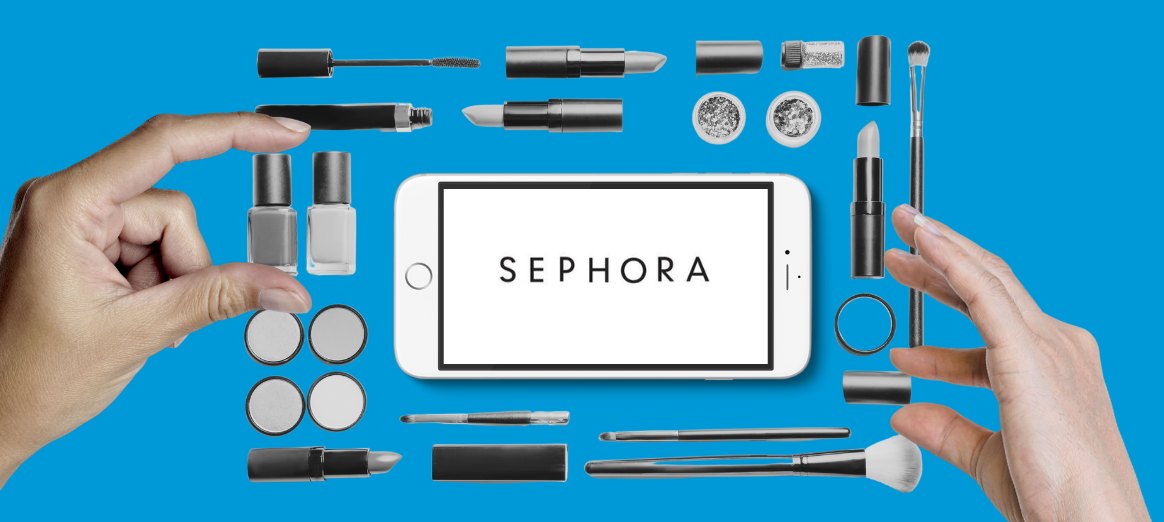
Other posts you might be interested in
The joys of customer service journey mapping, the bright and shiny b2b customer experience map, proud us customer experience awards (uscxa) partner, subscribe to email updates..
Enter your email below to receive daily resources and updates.

How Video Marketing Shaped Sephora’s $37.2 Billion Success
An average woman spends around 55 minutes every single day applying makeup. So it’s no surprise the value of global beauty industry is expected to reach $675 billion by 2020.
Beauty brands, like Sephora, who are staying in touch with all the latest marketing trends and tactics have seen an explosive growth in their brand value and yearly revenue. Sephora is currently worth a crazy $37.2 billion with,
962k followers on YouTube
13.9 million followers on Instagram
17 million likes on Facebook
2.4 million followers on Twitter
Much of their success comes from their video marketing prowess via these very platforms. Because let's face it, in the age of online buying, who’d buy a $30 foundation without going through a million reviews on YouTube? And Instagram? And SnapChat?
No one. Exactly.
So the beauty world and video go hand in hand.
Sephora also focuses on creating videos at scale. While using Wipster, Sephora went from 250 videos in 2016 to over 600 in 2017. Their ability to work efficiently and publish more video faster means they get in front of more of their audience with highly targeted content. It's all about the right content, at the right time, for the best beauty experience.
“We’ve always been a playful environment, it’s one of the disruptive initiatives that Sephora brought to the market, broke the glass camera and really created an unbiased beauty experience. As more and more clients were shopping online, we really challenged ourselves in how do we bring that differentiation of play out of the store and onto the phone and our partnership with virtual artist was born.”
Calvin McDonald, CEO and President of Sephora
1. Queen of Influencer Marketing
When it comes to the brand’s criteria for these influencers, it’s focused primarily on millennials who are just beginning to play with beauty. Deborah Yeh, Sephora’s senior vice president of marketing and brand.
Sephora’s influencer campaigns scream real. They partner with authentic influencers; people who’re truly obsessed by beauty and have built powerful empires by demonstrating their beauty expertise.
As a Sephora representative said ,
‘One fun story Sephora shared was about an influencer who created a video with Urban Decay’s Primer Potion, back when it was shaped like a genie bottle. The influencer actually cut the bottle in half - on video - so that she could scoop out the last bits of the product. Sephora and Urban Decay were huge fans of this video, because it was authentic -- the influencer loved the product so much that she wanted to get out every last drop she could.’
They’ve partnered with influencers in several different ways.
SnapChat takeovers
Sephora collaborated with Clinique spokeswoman, Hannah Bronfman, on a live SnapChat takeover. Hannah showed SnapChat followers her daily beauty routine and introduced products that she used and loved.
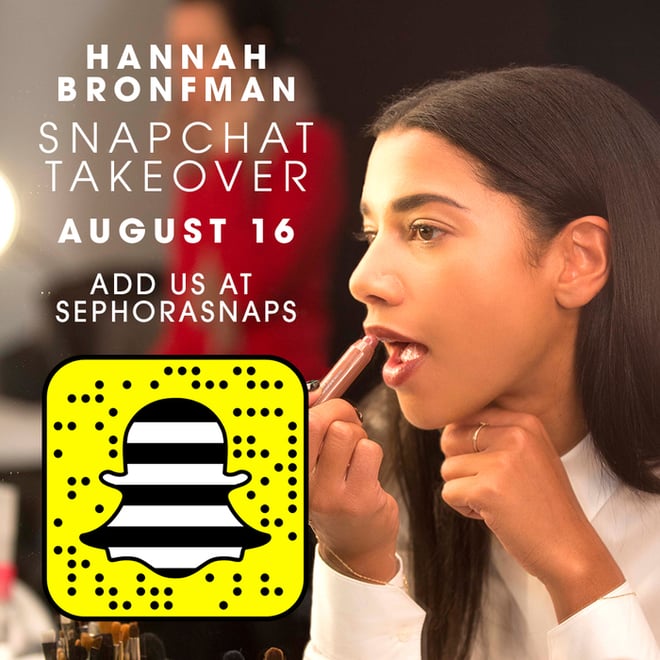
These kind of Live video takeovers are great at establishing a brand’s authority and bringing in a gigantic amount of new followers.
YouTube beauty videos
Sephora consistently partners with top makeup artists and beauty lovers on YouTube and provides them Sephora goodies in exchange for honest reviews.
My name’s Maham Chappal, and I’m a YouTube beauty video junkie.
I’ve lost count of the amount of times my favorite beauty gurus did haul, product testing, and first impression videos in collaboration with Sephora. And Google backs me on this claim.
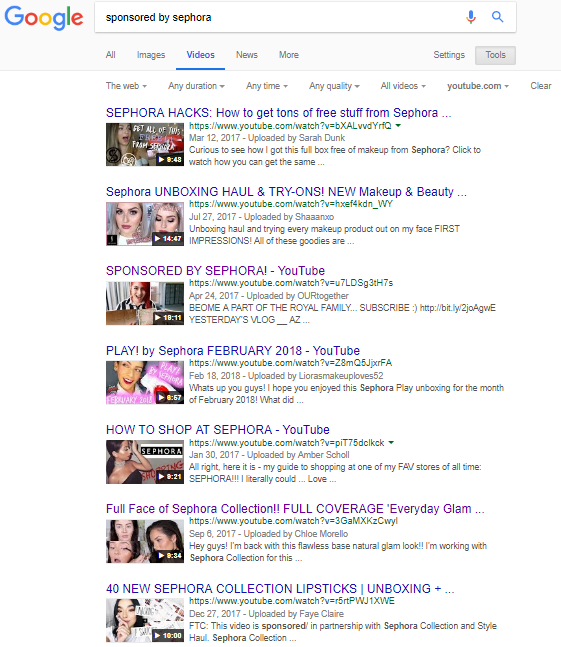
Instagram-ming their way to success
They also partner with micro influencers and macro influencers on social media, especially Instagram (which is a hub for beauty lovers). They started a campaign #beautyuncomplicated where they encouraged these influencers to post videos using their Sephora Collection and send people to the brand’s website.
I just uploaded a GRWM featuring some new @sc products + my vlog in San Francisco!! \uD83C\uDF09\uD83D\uDCAB #sephoracollection, link in bio! #beautyuncomplicated #ad A post shared by Marla Catherine (@marlacatherine) on Feb 28, 2018 at 12:14pm PST
Key Takeaway:
2018 is the year of influencers. Don’t focus on celebrity level influencers, but find small-to-medium ones that are popular in your consumer's circle. Collaborate with like-minded brands and increase your reach.
2. Collects and uses audience data strategically
“Data is kind of a currency to us. We have a lot of data on our clients and we’re trying to figure out how to leverage it.” Angel Singh, director of product analytics and optimization at Sephora .
Most of their success is attributed to their data collection expertise. Among other tactics, they use external social listening tools, utilize data from their Beauty Insider program and several other loyalty levels to understand the needs and wants of their potential customers.
Sephora knew that beauty content on YouTube grew by 50% from 2014 to 2015 and that YouTube searches related to "how-to" were up 70% year over year . So they created their YouTube strategy accordingly. They focus heavily on how-to tutorials, product demonstrations, and partaking in the latest trends (feather brows, anybody?!) to appease their consumers.
“Since the inception of YouTube, Sephora has used video to galvanize our strength in stores — to demystify makeup from the most basic applications to the latest trends.” Bridget Dolan, VP and Head of Sephora’s Innovation Lab
Leveraging data to select the right brand ambassadors
Each year, Sephora partners with new ambassadors and micro influencers to promote their latest merchandise. They’ve partnered with StyleHaul, a content marketing agency that provides them with real data on their consumers and potential brand ambassador. It helps them figure out which influencer has better cross channel reach and will be useful for their influencer program.
Currently in 2018, Sephora is focusing on promoting their #LIPSTORIES line of 40 lipsticks that debuted in December last year.
Before creating a video marketing strategy, focus on understanding your potential consumers thoroughly. Collect data extensively and then use it to create an optimum strategy.
3. Synchronised Videos
DeSantis Breindel in his whitepaper on synchronized marketing says,
‘If you think of synchronized swimming in the Olympics, all the swimmers orchestrate their moves simultaneously to create a much larger and more important image than any individual stroke.’
Makes sense, right?
All successful brands unify their brand message through synchronised marketing. Sephora does the same, especially where their video marketing strategy is concerned. Let’s discuss some of the synchronised elements in their YouTube video marketing plan.
Synchronised backdrops
Most of their YouTube How to and Tutorial videos that feature their regular employees have a solid white backdrop in their background.
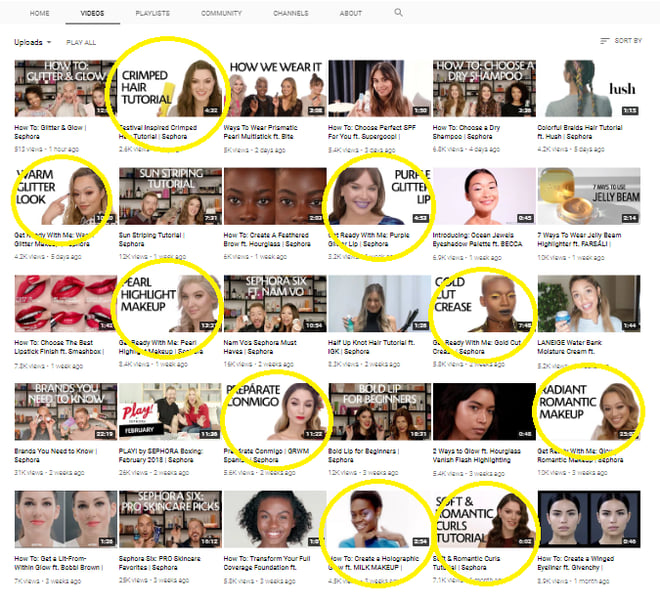
Video featuring their pro-artists are shot against a wall full of Sephora goodies.
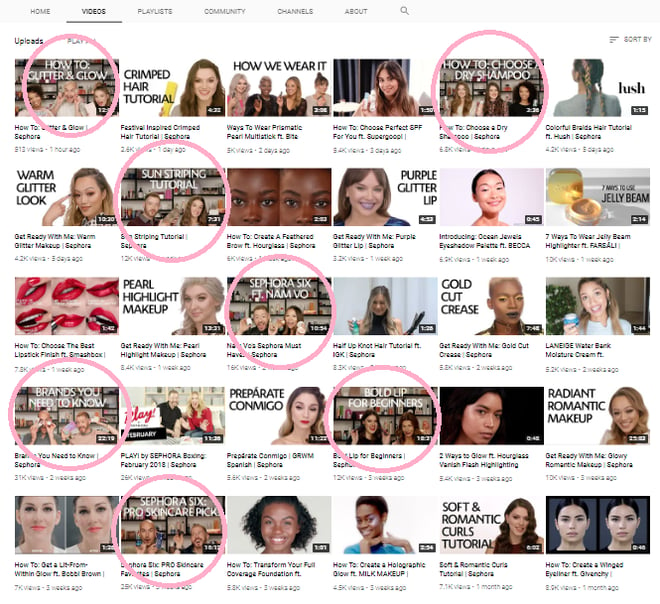
Tutorials that feature influencers and are collaborations have natural backgrounds.
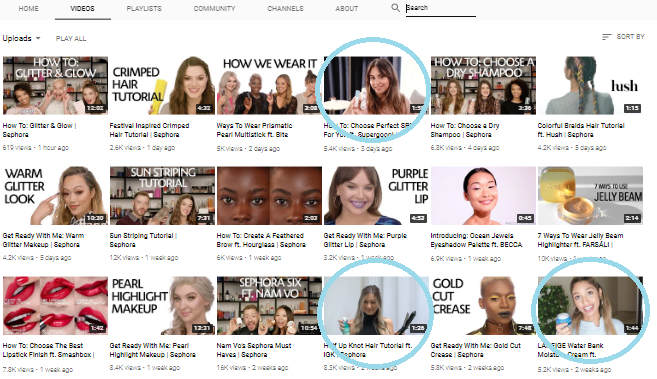
Here’s an excellent article by Wistia that teaches you everything you need to know about creating on fleek backdrops.
2. Synchronised Intro
Most of their videos start off with the following image, one that embodies Sephora’s brand image.
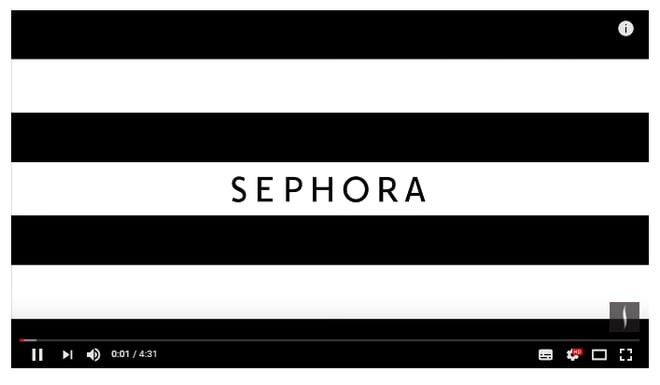
Then the video presenter - makeup artists, their senior artists, or influencers - will introduce themselves within 10 seconds.
Then there’s a couple of seconds long animated title clip, giving out Sephora’s minimalistic vibes.
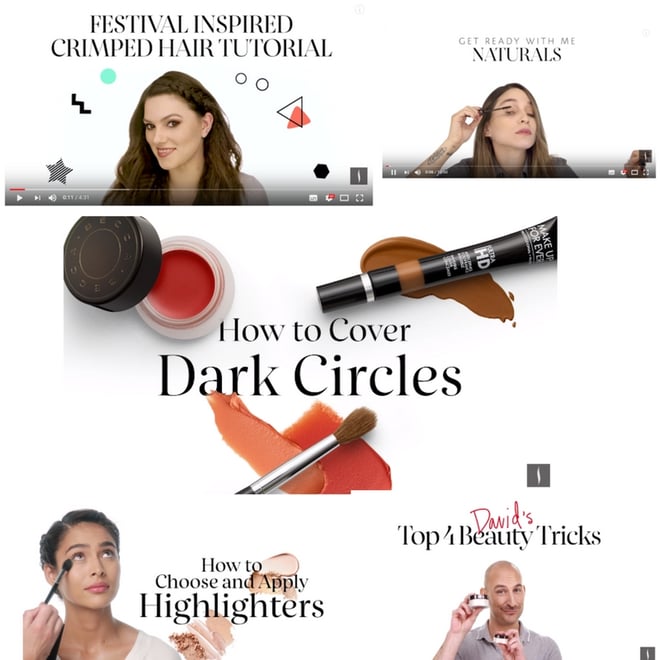
4. Supports and Promotes Diversity
The former beauty director of Essence magazine has stated, “foundations and concealers [are] not going dark enough. Most companies seem to stop at Kerry Washington. Any women darker than her seem to be out of luck.”
Several brands are still promoting fairer skin, in Nivea’s case ‘visibly fairer skin’ for Western Africa, L’Oréal Paris’s ‘White Perfect range’ to ‘visibly brighten skin tone’ for Asian skin tones, and Garnier’s ‘White Complete’ for ‘instant whitening and flawless fair skin’ .
And let’s not forget this ridiculous Loreal ad where they’ve completely whitewashed Indonesian and Asian skin tones. The average Indonesian skin tone is at least couple of shades darker than Loreal’s darkest foundation.
But there are other big beauty brands who’re acting as strong diversity advocates.
Sephora is one such brand. They’re keen on promoting diversity in their video campaigns to their target market - women in all shapes, sizes, colors, race, ethnicity, and beauty. One of their recent campaigns, Reach out and Gift, is an excellent example of this.
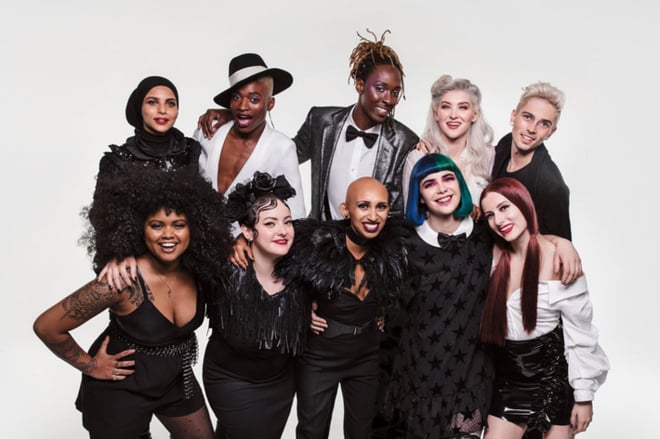
For this holiday collection, Sephora chose their own multicultural employees. Over 1000 brand consultants applied and 10 were chosen. All the consultants were asked to send a video explaining how they defined ‘unique beauty’.
Another campaign that did incredibly well last year was their #NeverStop, celebrating beauty choices of all women.
5. SnapchaT
Sephora was one of the very first brands to join SnapChat and use it for multi channel marketing.
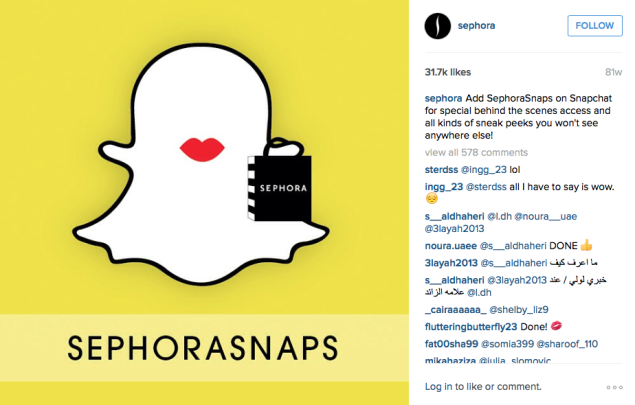
They’ve run super successful sweepstakes through this app, black friday promotions, deals and discounts, new product introductions, trips to events, details about their popular Facebook AMAs, and so much more.
They’ve also embraced SnapChat’s geofilters, and allow users to use them when they’re near Sephora stores. They also introduced lenses and makeover filters to further entertain their followers.
However, one of their biggest wins through this app has been their experiments with shoppable posts. They create short videos and image posts showcasing their products and ask users to screenshot whichever product strikes their fancy. The they’re asked to download the ShopStyle iOS app and upload the screenshot in the app. The app will pull up details of that product and allow users to purchase it.
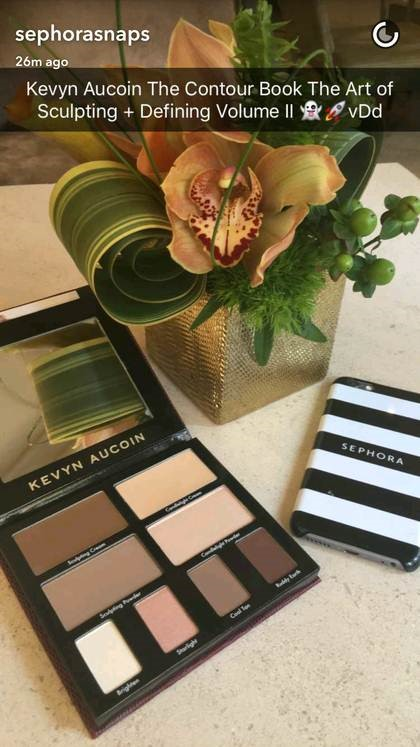
Do YOU. But do it!
We’ve reached a point where video is no longer an option. You have to invest your time, money, and effort in it in order to succeed. It doesn’t matter what platform you start with, or the kind of videos you create, just start. Sephora was one of the first one’s in the beauty industry to start using videos everywhere, and look how it’s paying them back now.
“Streamlined and Elegant”: How the University of Oklahoma media team provides a professional review experience for their faculty stakeholders
The Office of Digital Learning, at the University of Oklahoma has a unique role in the education and support of their 30,000 students and 3,000...
Collaborating with scientists from across the globe: Why using Wipster was a no-brainer for the Society of Neuroscience
Did you know that we only use 10% of our brain power?
Wipster enables leading B2B live event business Emerald to create compelling video and audio content.
Emerald is a leading producer of business-to-business trade shows, conferences, content & media products in the United States. They have ~700...
The Business of Fashion
Agenda-setting intelligence, analysis and advice for the global fashion community.
News & Analysis
- Professional Exclusives
- The News in Brief
- Sustainability
- Direct-to-Consumer
- Global Markets
- Fashion Week
- Workplace & Talent
- Entrepreneurship
- Financial Markets
- Newsletters
- Case Studies
- Masterclasses
- Special Editions
- The State of Fashion
- Read Careers Advice
- BoF Professional
- BoF Careers
- BoF Insights
- Our Journalism
- Work With Us
- Read daily fashion news
- Download special reports
- Sign up for essential email briefings
- Follow topics of interest
- Receive event invitations
- Create job alerts
Case Study | Sephora’s Bid to Dominate Global Beauty Retail
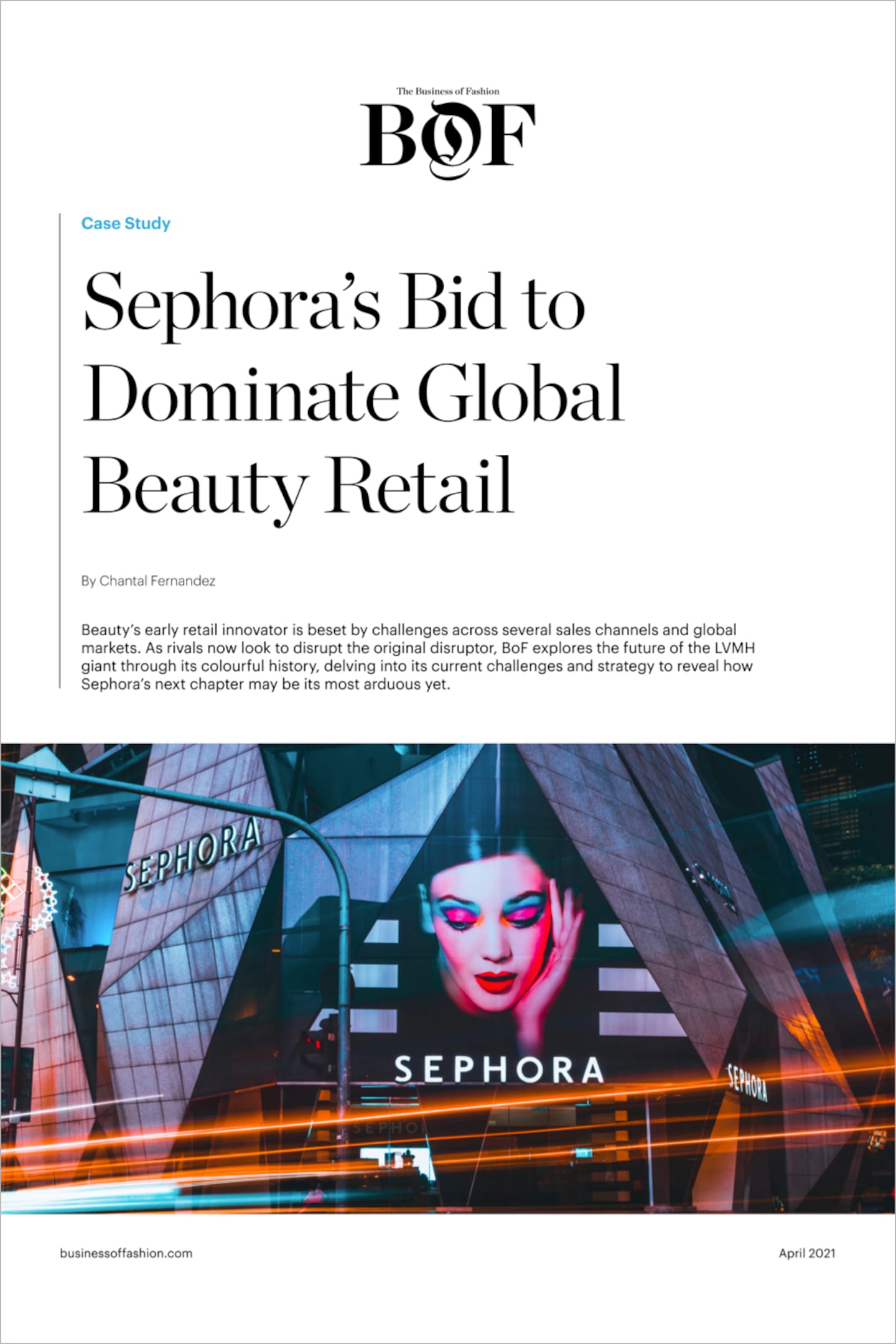
- Chantal Fernandez
Today, Sephora is synonymous with luxury beauty, generating more than an estimated $10 billion in annual sales across 2,000 stores in 35 countries, making it one of the most successful multi-brand retailers in the world. The retailer has managed to consistently disrupt the beauty market with its assisted self-service multi-brand and multi-category approach. But Sephora wasn’t always a success story, even after LVMH acquired it in 1997.
Sephora first expanded against many odds in 1970s France, a market then dominated by independent perfumeries. Three decades later, it defied competitors again as it grew its footprint internationally, displacing entrenched luxury beauty sellers at American department stores and other legacy retailers around the world.
Then in the 2010s, Sephora defended itself once again against the rise of e-commerce players and the decline of the mall. Now, amid a pandemic that has hindered access to its most important assets — its carefully curated stores — Sephora faces more competitors across more regions and channels than ever before and is increasingly competing with the brands sold in its stores. Can beauty’s original retail disruptor fend off the latest wave of competitors? BoF explores Sephora’s prospects through the lens of its colourful history, delving into the context of its current challenges and strategy, to reveal insights about the state of the beauty market in 2021.
Click below to read the case study now.
© 2024 The Business of Fashion. All rights reserved. For more information read our Terms & Conditions
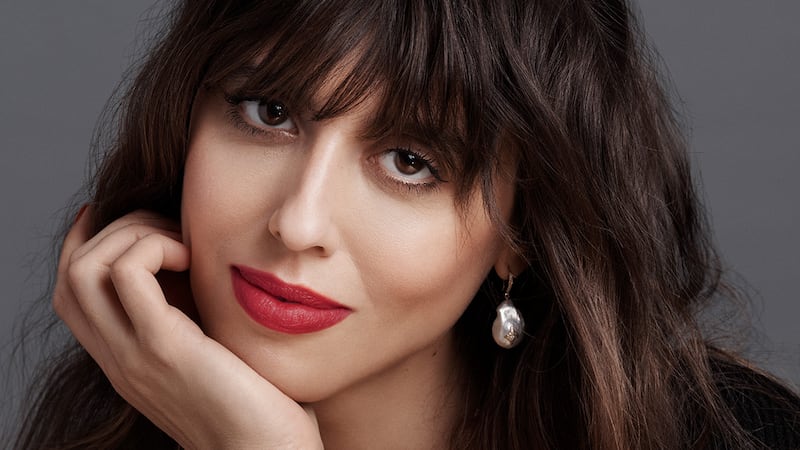
The Business of Beauty Haul of Fame: French Girl Beauty? Try French Woman Beauty
Guerlain really wants to win this game.
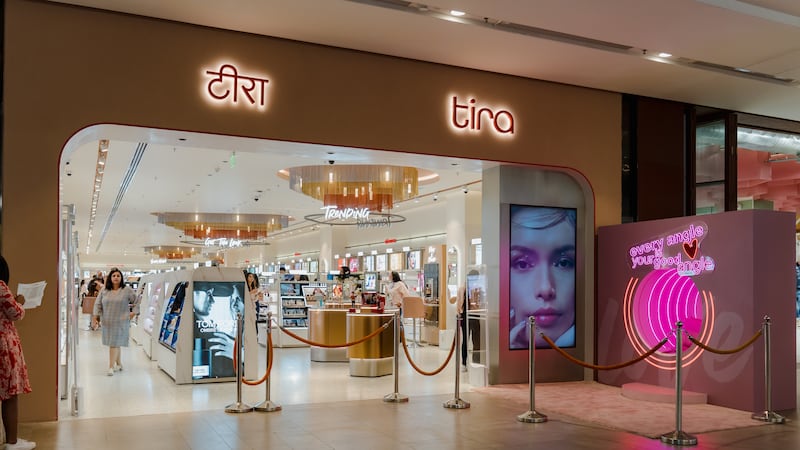
Inside the Indian Beauty Retail Wars
The battle for exclusive international beauty launches is intensifying as Nykaa, Tira and more set their eyes on expansion.

The Scent Firms Hacking the Retail Experience
As in-person retail continues to recover, store owners and marketers are working hard to press the main advantage analogue shopping has over digital: its appeal to all the senses.
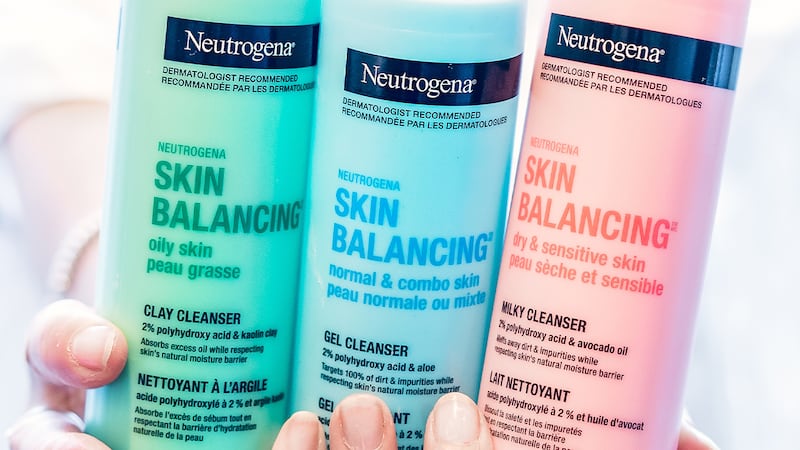
Neutrogena Lost Dermatologists and Missed Out on the $42 Billion Beauty Boom
What had once been a nimble, innovative company, Neutrogena became slow-moving and cautious. It retreated precisely when rivals went all in – and missed out on a big chunk of the market.
Subscribe to the BoF Daily Digest
The essential daily round-up of fashion news, analysis, and breaking news alerts.
Our newsletters may include 3rd-party advertising, by subscribing you agree to the Terms and Conditions & Privacy Policy .
Our Products
- BoF Insights Opens in new window


The magic of Sephora's community-led path to success

Once upon a time, in the dazzling world of beauty products, there was a company that discovered the secret to success – and it didn't involve fairy godmothers or magic wands. This is the story of how Sephora leveraged its community-led growth strategy to transform itself from an ordinary cosmetics retailer into an enchanting global powerhouse.
Quick history
Founded in France in 1970, Sephora embarked on its own Cinderella-like journey to revolutionize personal care and beauty products. The brand expanded internationally over the years before being acquired by luxury conglomerate LVMH in 1997. But it wasn't until two decades later that they would unlock their true potential with the launch of their Beauty Insider Community.
Product and values
“A leader in prestige omni-retail, our mission at Sephora is to create a welcoming beauty shopping experience for all and inspire fearlessness in our community.” - Sephora’s Mission Statement
Sephora's product offerings include makeup, skincare, fragrances, haircare – you name it. But what sets them apart from other retailers is their commitment to providing customers with expert advice and personalized recommendations through curated experiences both online and offline.
The company values innovation as well; they are always looking for new ways to improve customer experience while staying ahead of industry trends.
As you can read in their mission statement, community has been at the center of their vision from the beginning. But what does that look like, exactly? Let’s explore in a little more depth.
Community-led growth: An in-depth look
“The way we think about loyalty is that our clients are the core of everything we do. We are driven by what our customers love and want more of. So it’s not about what their loyalty demonstrates to us, but what we can deliver to our clients that creates the most meaningful and connected experience with our brands.” - Allegra Stanley , former VP
Sephora and its spokespeople have always stood firm in their community-focused strategy. In 2017, the company launched its Beauty Insider Community as part of this approach.
This members-only mobile and online social platform provides "beauty lovers" with a forum where they can find inspiration, ask questions, and get recommendations in an unsponsored social setting.

With over 5.5 million members generating more than 2.7 million posts collectively so far, it seems they've found their happily ever after!
The foundation for such extraordinary growth lies within several key factors that have contributed not only towards building strong relationships among community members but also driving sales:
1. Encouraging user-generated content (UGC) allows consumers themselves to drive the conversation and share their experiences, opinions, and tips with others. This fosters a sense of authenticity within the community as content is created by real people rather than being solely dictated by Sephora.

2. Sephora's open-minded approach to allowing users to review all brands offered both online and in-store not only encourages active participation but also enhances trust in the company. By giving customers the freedom to express their opinions and experiences, Sephora demonstrates a genuine commitment to transparency and customer satisfaction.

3. The specialized community discussions create an inclusive environment for everyone, regardless of their level of expertise or purchasing history with Sephora. This makes the platform accessible to all beauty enthusiasts who are interested in learning from others or sharing their knowledge.
4. By monitoring these discussions closely, Sephora is able to gather valuable insights into customer preferences and uncover potential innovation opportunities. This data-driven approach allows them to identify trends early on while also addressing any pain points that may arise within the community.
5. Addressing common issues faced by consumers such as advice on cosmetics or offering AR makeup try-on features not only boosts sales but also enhances overall user experience within the community. It's a win-win situation for both customers and the business alike.
Pillars of the strategy
Internal social media platforms are always a gamble, and Sephora’s Beauty Insider community has certainly evolved since it first launched in 2017 – but impressively, user participation is still part of the platform.
Sephora’s community strategy includes five main pillars:
- Community Home: The heart of any good fairytale kingdom requires a central gathering place for all things magical (or beautiful). In this case: discussions around everything related to beauty.
- Groups: Making sure each person has access only to topics relevant for them means grouping specific interests together, like skincare for a certain skin type.
- Gallery: A picture is worth a thousand words, and these galleries showcase members' looks and routines – creating inspiration that's truly contagious.
- Ratings & Reviews: The backbone of the community comes from honest reviews on products offered by Sephora, giving customers valuable information to make informed decisions when shopping.
- Q&A: Just as Rapunzel had questions about the world outside her tower, community members can ask questions and receive answers from fellow beauty enthusiasts, fostering connections and trust within the group.

Since its original launch, more financial incentives have been added – like special deals for big spenders, birthday gifts, exclusive events, shipping perks, and more. It’s a great move; users are not only rewarded but incentivized to continue participating.
Mobile integration - Beauty Talk
As part of its commitment to seamless customer experiences across channels, Sephora launched its mobile app 'Beauty Talk,' providing easy access to connect with other members anytime-anywhere. It was almost like giving users a pocket-sized fairy godmother ready whenever they needed advice.
This mobile integration not only made it simpler for community members to stay connected on the go, but it also encouraged more frequent interactions and engagement within the platform.
By making their community easily accessible through mobile devices, Sephora tapped into the ever-growing trend of smartphone usage while ensuring that their customers could always find support and inspiration at their fingertips.

Takeaways: what we can learn
Sephora's success story teaches us that investing in a user-focused strategy not only benefits customers but also drives company growth. Here are some key takeaways:
- User-Generated Content (UGC): Encourage users to create content by providing them with opportunities to share photos, reviews, and discussions. This will foster authenticity within your community as well as enhance trust in your brand.
- Trust Through Transparency: Allow users to review all brands offered both online and in-store, encouraging active participation while demonstrating commitment to customer satisfaction.
- Inclusivity & Accessibility: Create an environment where everyone feels welcome regardless of their purchasing history or level of expertise – this will make your platform truly inclusive for anyone with an interest in your niche.
- Data Mining for Innovation: Monitor discussions closely to gather valuable insights into customer preferences while identifying potential innovation opportunities – turning straw into gold!
- The Power of Super Users: Track and encourage "super users" who spend significantly more than typical clients; target incentives and promotions specifically towards these high-spending individuals to ensure continued loyalty.
- Addressing Pain Points: Tackle common issues faced by consumers head-on by providing solutions such as expert advice or advanced technological features like AR makeup try-ons – boosting sales further while enhancing overall user experience within the community.
- Mobile Integration: Ensure seamless customer experiences across channels by launching a mobile app dedicated entirely to connecting with other members quickly and conveniently.
Of course, every business is going to have its own tailored strategy, but these are just some of the ways you can bring your users into the center of your strategy. These approaches worked for Sephora, and they could work for you, too!
In conclusion
From humble beginnings to a global powerhouse, Sephora's journey is the perfect example of how community-led growth strategies can impact both customers and businesses positively.
By creating a space where beauty lovers can connect, learn, and inspire each other, the French cosmetics retailer has managed to build not just a loyal following but also foster an environment that drives innovation and growth.
So as you ponder over your next business strategy or simply search for a new beauty product to try, remember that the magic of Sephora lies in its community-led approach. And who knows – perhaps with a little fairy dust (or strategic thinking), you too can create your own enchanting success story.
Now go forth and conquer the world of beauty, one conversation at a time!
{{amity-social="/cta"}}
Join the Amity Social Club monthly newsletter:
Don't miss out on the most recent updates, enhancements, and new features.
You are using an outdated browser. Please upgrade your browser to improve your experience.
We’re pleased to announce that Sailthru is now Marigold Engage by Sailthru. Learn more here. x

Marketing Blog → What Makes Sephora Such an Outstanding Omnichannel Retailer?
What Makes Sephora Such an Outstanding Omnichannel Retailer?
March 25, 2021
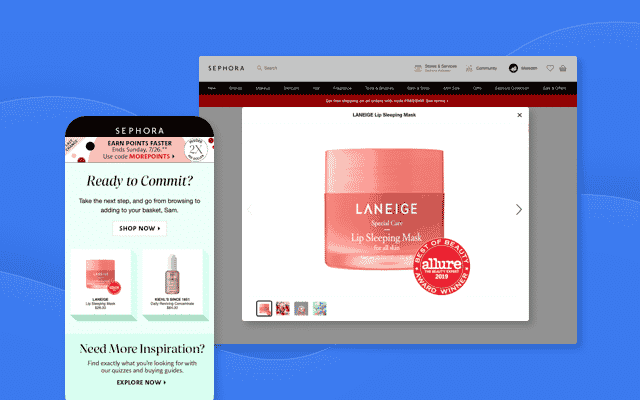
The next time someone questions the amount of time and money you’re spending on personalization to unify the customer experience, tell them about Sephora —the queen of omnichannel retail sitting on top of the fourth annual Retail Personalization Index as an undefeated champion.
Store closures during the COVID-19 pandemic shut off access to one of the cosmetics empire’s essential sales experiences: in-store “try before you buy” sampling and technique demonstrations, classes, and consultations.
After closing nearly all of its retail outlets by March 2020, Sephora quickly switched to VR (virtual reality) demos and appointment-based virtual tutorials, consultations, and personal shopping. Even after reopening mall, stand-alone, and pop-up locations last August, the brand continues to rely on virtual experiences instead of hands-on, in-store interactions whenever possible.
In a letter to shareholders last August, parent company LVMH said that Sephora is still gaining market share, “illustrating its inventiveness and the effectiveness of its omnichannel strategy. Online sales grew very strongly over 2020.”
Focusing on a Seamless Customer Experience
Switching from stores to ecommerce was a painful transition for some retailers, but Sephora’s work in previous years to incorporate personalization technology and build up its ecommerce business continues to pay off.
Sephora previously invested heavily to build up its ecommerce division . And, as you can imagine, that came in handy when it was able to handle the sudden explosion in online shopping better than many of its competitors after COVID-19 reached the U.S. It also fused the brand’s digital presence with its brick-and-mortar stores to create a seamless shopping experience across channels long before 2020 put its efforts to the ultimate test. According to Mary Beth Laughton, EVP of Omni Retail, “omnitude” is Sephora’s secret ingredient.
“It’s about creating an attitude and a mindset around putting the consumer at the center of everything,” she said on a recent episode of the NRF’s Retail Gets Real podcast . “We coined this term ‘omnitude,’ and it’s this idea that we’ll do whatever we can to delight our consumer wherever she’s shopping with us.”
How Technology Recreates the Store Experience Online
Brick-and-mortar stores are essential to Sephora, in part because they’re where three-quarters of customers transact for the first time. They also provide the brand with valuable data it can’t capture online, improving personalization down the road.
“Stores play an important role because even with more and more touchpoints, like social and voice, people are longing for a personal connection in real life,” adds Mary Beth. “When they come into one of our stores, they can interact with one of our Beauty Advisors and get this really personal advice.”
Beauty products can be overwhelming. A search for “lipstick” on Sephora.com brings up 560 different items from dozens of brands. As a result, Sephora stores are filled with technology to help shoppers find the perfect products for them .
For example, there’s an AR (augmented reality) fitting room, as well as Color IQ, which scans customers’ skin to match it with the right foundation — a huge pain point for beauty shoppers.
In stores, Beauty Advisors scan every product they use in makeovers. Afterwards, Sephora emails send a log to the customer, making it easy for them to recreate the look themselves.
On Sephora’s website, the personalized experience begins the minute a new customer visits. The site grabs the visitor’s location data to show the nearest store as well as which in-store services are currently available so visitors can find out what they need to know without an exhaustive search to track information down.
Sephora’s innovative chatbot is the AI-driven equivalent of a store’s friendly, immaculately groomed salespeople. It provides product and beauty advice, as well as personalized recommendations, without coming across as an aggressive product-pusher.
Get ready: the digital experience will continue post-pandemic
Sephora CTO Sree Sreedhararaj praised the company’s early-adopter mindset and digital platform development for making its most recent transition. “Our client services team continues to engage with our beauty community via emails and phone calls, but recently, the default behavior for our community is to utilize our chat function,” he says.
“Similarly, with our in-store Beauty Advisors, we are uniquely positioned to provide a much more personalized one-on-one experience through these chat options online and are leveraging them to assist. We also offer contactless try-on services through Sephora Virtual Artist features on the app and in stores.”
But Sephora shouldn’t be the only one benefiting from email, web, and mobile personalization trends. Download our guide for beauty retailers today to see how industry leaders are using personalization to drive revenue growth through more positive customer experiences —and how you can apply the strategies they’re using to your business.
The State of Brand Loyalty in the U.S. in 2023

The 2023 Consumer Trends Index: What it Means for Media Marketers
From streaming subscription services to gaming and podcasts, consumers have an endless choice of options and platforms for consuming content. And similar to other...

3 Interactive Experiences We Love Right Now
Interactive digital experiences can help build brand loyalty while delivering key details about your customer’s interests and future purchase intent. The importance of data...

5 Gen Z Stats Marketers Need to Know
The influence of Generation Z is on the rise. Estimated to account for as much as 26% of the world’s population, Gen Zers care...
Join our newsletter
Must be Business email.
You may unsubscribe at any time. Visit our Privacy Statement to learn more about how we process your data and your rights as a data subject.
Case Study – What Does Sephora Teach Us About Digital Customer Experience?
1. technology that makes customers lives easier.
“According to the source, it appears that Sephora was millennials’ favorite beauty retailer in France in 2019. Indeed, for 100 euros spent at Sephora, young French people spent on average 34.2 euros at Yves Rocher that year. Several subscription box companies ranked in the top 15, including Birchbox.” – Statista
What elevates Sephora’s digital customer experience strategies to a truly inspirational level is their obvious understanding that customers look to technology and adopt it when it makes their lives easier. With around 1,750 retail stores in 30 countries, Sephora has made “useful technology” a central part of its brand. Customer’s expectations of them are a company that offers “unbiased service from experts, an interactive shopping environment and innovation.”
Right out of the best-practice customer experience playbook, whenever Sephora does something innovative, creative, tech-savvy, etc., they’re strengthening their customer relationships – because they’re consistently delivering on customer expectations better than anyone else in their industry.

2. A Digital Solution That Directly Addressed Customer Needs
Having discovered that customers often use their smartphones when shopping at the retailer’s brick-and-mortar locations and that these shoppers were often searching for outside recommendations, product reviews or better prices on the products they were considering purchasing in-store, Sephora developed the Sephora mobile app which focuses on providing shoppers with a mobile experience that is catered to their needs. The app is designed to emulate the knowledge of a personal shopping assistant or a Sephora sales associate in that it provides product recommendations, reviews, and pricing information in a simple format which makes it easy for a customer to purchase products.
In other words, the goal of Sephora’s mobile app is to give customers the tools they need to help them feel confident in making a purchase – whether in-store or online – without necessarily needing to speak to a sales representative or research outside sources as they were doing previously.
The app also comes with an AI feature called Virtual Artist , which uses facial recognition technology to allow customers to virtually try on makeup products and determine how to apply the product. The app can then either send customers to purchase the products online or tell them where they can be found in a store.
By noticing the habits of in-store shoppers and addressing their needs with its mobile app, Sephora can enhance the digital shopping experience for customers both in-store and online. Thanks to the mobile app, Sephora has been able to rebuild customer profiles to include 360-degree data that tracks the whole customer journey from online browsing and purchasing to in-store interactions with sales representatives and over-the-counter sales. In other words, Sephora’s mobile app has succeeded in tracing customers’ precise online behaviours and helping boost sales not only in online channels but also in offline stores.
“If a customer browsed online then bought in store, we can see that. We just weren’t looking at it before, but it’s a win for both channels,” said Laughton – Sephora’s VP omnichannel. “We had good relationships across our channels, but we weren’t collaborating or finding synergies, and we were maximizing business in isolation. We’re more aligned, and we can move faster across in-store, online and mobile strategies. Mobile is the glue that holds it all together.”
3. The Digital Solution That Is Personal To Each Customer And Help The Brand Drive Sales

Digital solutions can be used to solve even the most uncommon of challenges
As an added benefit of the mobile app, Sephora can collect more information about audience habits through the data that shoppers provide while using it, which helps the brand influence future purchasing decisions and drive more sales.
- One of Sephora’s key goals is to focus on creating a quality experience for each shopper whether on the web, on mobile or in-store. To accomplish this, Sephora uses data gathered from their customers’ shopping habits to personalize the content on the app that perfectly matches each shopper’s unique needs.
- One way that Sephora can gather this data is by analyzing the actions that a shopper takes after being presented with a product page. The choices a shopper makes help Sephora identify the customer’s intentions and design a more personalized user experience that accounts for whether the shopper is researching and comparing products, planning a purchase for later, or ready to purchase a product immediately.
For example, a shopper that adds a product to their basket could intend to make an online purchase, whereas a shopper that searches for a local store could intend to purchase a physical location. Regardless, these two shoppers are on different paths to purchasing from Sephora, and thus will likely have a unique experience.

4. The Digital Solution That Improve Customer Confidence In Purchasing Products
Sephora realized through product reviews and customer feedback that a common pain point for customers was purchasing a cosmetic product that wasn’t the right fit, which caused unwanted frustration for shoppers. To help solve this problem, Sephora creates online content to educate shoppers on their way to making a better purchase decision and feel confident with their selections.
For example, Sephora’s Pocket Contour Class offers tips on how to properly apply Sephora’s products and can recommend which products are right for a variety of skin tones. Further educational content is available on Sephora’s website and mobile app, as well as the company’s catalogue.
5. The Digital Solution That Generated Excellent Results
- App users spend two times more annually and purchase twice as frequently as the average Sephora customer.
- More than 200 million shades of products – lips, lashes, foundation and more – have been used by customers.
- Sephora’s applications have developed to be one of the most used apps in the history of retail application, ranking atop for not only in lifestyle app ranking but also to all free apps.
- 300% increase in mobile shopping.
6. The Digital Solution That Teaches Us Lessons
What makes Sephora’s interplay between technology and brand so powerful is that it can’t be easily duplicated because their success is built on a deep alignment among the brand, technology and customer experience, and they consistently deliver on it with a level of customer-centricity that competitors would have a lot of trouble coping.

Digital transformation is the integration of digital technology into all areas of a business
Luckily, the steps it takes to join them are fairly well defined: you design a great strategy, adopt a technology that seamlessly executes it and leverages it to your advantage. The concepts around customer-centricity and digital customer experience strategy – though being quite straightforward that it can be embraced by anyone – is not simple. Your job is not only to come up with a great plan that engages all aspects of your business and streamline the customer experience across channels and platforms but also to build a creative, innovative and perfectly designed application that well serves your strategy. Sometimes it’s overwhelming to handle both at the same time and neither of them would come anywhere.
Sometimes, you as a business-savvy who does business for your whole life find struggles in coming up with a technology-incorporated strategy, a digital customer experience scheme. Therefore, it is optimal to outsource a skilled and experienced vendor to help you with the technology (consultation, software development ,..) so that you can focus on the selling and so on. It shares with you the mounting workload, it allows you to keep your eyes on your core competencies; it is cheap, risk-optimal and HR-effective, which are all the competitive advantages to wing up your digital customer experience strategy.
At the heart of this connecting world, Savvycom is racing against time and innovation to deliver world-beating social apps to our valued clients. With our 10+ years of tech expertise, the endorsements from 100+ clients of 4 continents around the world and multiple successful partnerships with reputable global firms such as Apple, Amazon Web Services, Google Cloud, and IBM, we make serving our clients with the best services a promise.
About Vance Duong
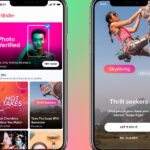
Related Posts
Traditional pos system vs mobile pos system: which is best for your business, mobile app design cost: instagram and uber examples, become a partner.

Grow your valuable network with us
Download Our Company Profile Now!
We can onboard IT staff in just 2 weeks! Boost productivity while saving time.
Share Your Needs
We’ll respond within 24 hours
TechRepublic
Account information.
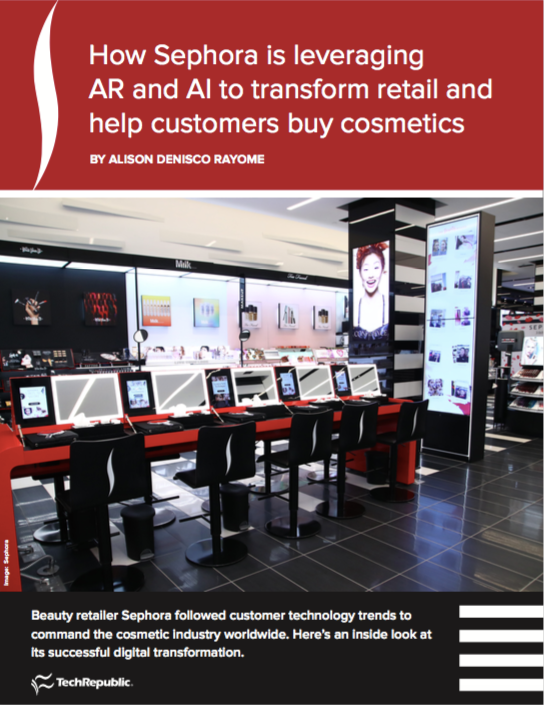
Share with Your Friends
How Sephora is leveraging AR and AI to transform retail and help customers buy cosmetics
Your email has been sent
In San Francisco’s Dogpatch district, a research laboratory explores new products that tap augmented reality (AR), artificial intelligence (AI), and RFID technology. Like many Silicon Valley startups, its team develops and pitches cutting-edge solutions and customer service experiences, promising to make life easier for its consumers.
But, this is no robotics company or maker of self-driving cars. It’s Sephora, the industry-leading chain of cosmetic stores that has leveraged digital transformation to take pole position as the number one speciality beauty retailer in the world.
“Digital and innovation have always been part of our DNA at Sephora,” said Mary Beth Laughton, Sephora’s executive vice president of omni retail. “We are very focused on our customers, and we know that her life is increasingly reliant on digital. So we know to be successful as a retailer, we’ve got to be where our clients are, and give her tools and experiences that meet her needs.”
While other cosmetic companies rely heavily on department store sales, Sephora offers customers a number of tech options that allow them to personalize their shopping experience by trying on makeup virtually using AR, matching their skin tone to a foundation with AI, and sampling a fragrance via a touchscreen and scented air.
Further, in Sephora’s Innovation Lab, launched in 2015, a team of executives hired from the marketing, product development, and technology industries source, develop, evaluate, test, and ultimately launch new offerings and technologies for shopping in the store and online.
“It’s about being open to new ideas, and working with partners to develop the right solutions–and being willing to do things that maybe our clients don’t even know that they want yet,” Laughton said. “That’s how we approach things, and as long as we’re doing it through the lens of our customer and finding ways to simplify and enhance their shopping experience, we’re willing to put focus there.”
Here’s an inside look at how the company has digitally transformed the beauty space to better meet the needs of customers and dominate the market–in a rapidly-changing retail environment.
Digital first
Sephora’s beauty retail concept was founded in France by Dominique Mandonnaud in 1970, and acquired by LVMH Moët Hennessy Louis Vuitton in 1997. The company now operates some 2,300 stores in 33 countries worldwide, with more than 430 stores across the Americas.
The company launched its website in the US in 1999, and kept moving forward in digital. It also invested early in mobile as more than just a place to make purchases.
Perhaps its most innovative and accessible mobile offering is Sephora Virtual Artist, an AR tool that allows customers to try on thousands of shades of lipstick, eyeshadow, false lashes, and many other makeup products sold at Sephora. It also lets users go through beauty tutorials on their own face digitally to learn how to achieve certain looks. A new feature called Color Match taps AI to help customers find the right color shade for their skin tone via an uploaded photo. Virtual Artist is available in the Sephora app as well as in select stores.
“Sephora Virtual Artist is a really good example of where there was a real customer need,” Laughton said. “It can be overwhelming coming into our stores or shopping online, but this makes it easy to help you find your favorite shade and save you time.”
Sephora worked with ModiFace to develop the technology. “We are based on technology developed at Stanford University and included face tracking and computer vision,” said Parham Aarabi, CEO of ModiFace. “But we found that in a beauty space, there was a need for this visualization, and that’s how we got started.”
For the past five years, ModiFace and Sephora experimented with AR. “A few years ago, Sephora realized that the technology had come to a certain level of realism and quality that they felt it could impact their business in a dramatic way,” Aarabi said. Since launching in 2016, every four months, ModiFace and Sephora add in more features or expand to other platforms.
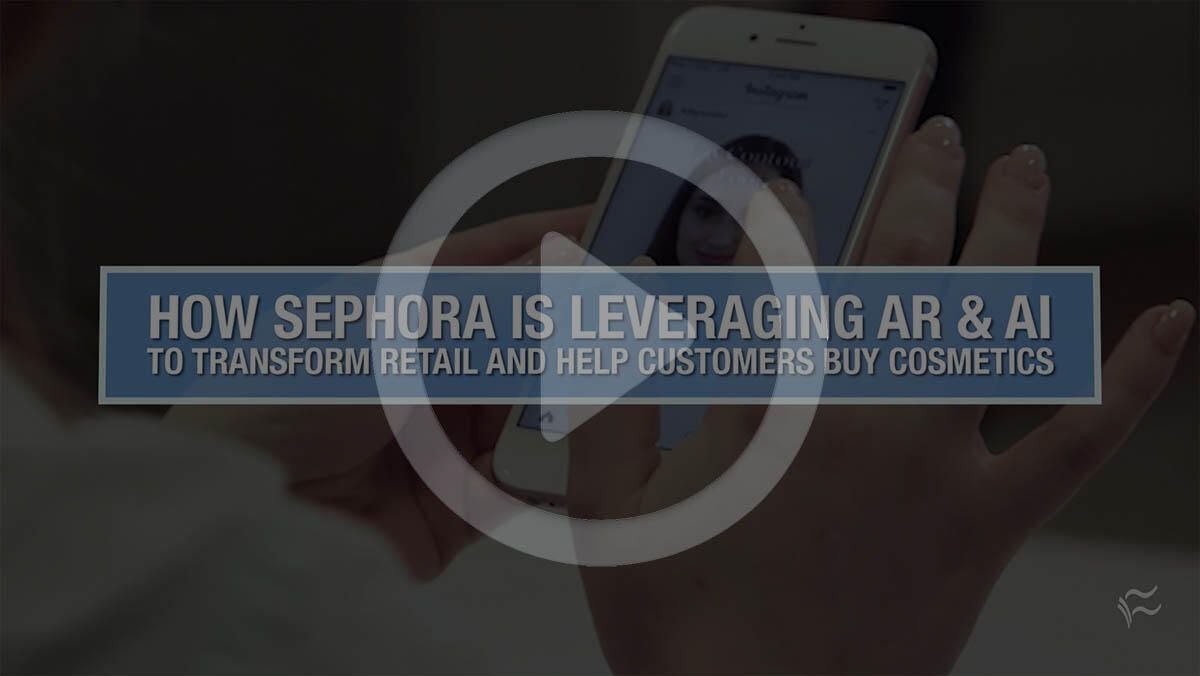
The core of the technology is the ability to track facial features accurately, Aarabi said. “We have essentially trained a program that can measure where the lips and eyes are in real time and track those facial feature points,” he added. “Once we know where those elements are on the face, we can then know where the lipstick or eye shadow should go.”
ModiFace worked closely with Sephora to ensure every single color of a virtual product matches the product in real life, Aarabi said. As of this writing, the Virtual Artist includes more than 20,000 products sold at Sephora, including highlighters, blushes, concealers, lipsticks, and eye shadows.
“Before Sephora, we would have to go to brands and try to motivate them and show them why technology could make sense for their business,” Aarabi said. “Sephora has gotten it from day one, wanting and incorporating new ideas. It’s great to have a partner that believes in technology.”
SEE: Why Dick’s Sporting Goods decided to play its own game in ecommerce (free PDF)
Since launching on the app, Sephora Virtual Artist has seen 200 million shades tried on, and over 8.5 million visits to the feature, according to the company.
Sephora’s app also includes product ratings and reviews, and a feature that allows you to test out different hairstyles on the Android version.
Today, most clients visit the app several times per month, to check everything from content to personalized messaging, according to the company.
“What’s common across all of our digital efforts is that we’re not just doing technology for the sake of it or because it’s cool or new,” Laughton said. “Every digital product or tool or experience that we introduce is done to make shopping for our consumer more fun and more efficient–to help engage her, educate her, and entertain her.”
Innovation and inspiration
Finding the correct foundation color was one of the largest beauty concerns of Sephora’s customers, Laughton said. In response, the company partnered with Pantone to develop a shade-matching technology called Color IQ, a handheld device that will soon be in all North American Sephora stores that provides a read of each customer’s skin tone. The customer is assigned a Color IQ number, which helps them filter through thousands of lip colors, foundations, and concealer shades to choose the one that’s best for their specific coloring.
The company launched seven Beauty TIP (teach, inspire, play) Workshops across North America. At these concept stores, customers come together to learn via group beauty classes. Customers can leverage tutorials and Sephora Virtual Artist technology on integrated iPad stations, or gather inspiration from The Beauty Board, Sephora’s shoppable gallery showcasing user-generated content via a large digital screen.
And in two New York City stores, customers can try out the Innovation Lab’s newest tech venture, Tap and Try. The technology lets you pick any lip or lash product on an endcap display, and immediately try it on using Sephora Virtual Artist combined with RFID scanning.
Finally, a few stores across North America offer Sephora’s Fragrance IQ experience with first-to-market sensory technology called InstaScent. After filling out an online scent profile, InstaScent allows clients to test 18 different scents using a dry air delivery system, so they can test them out without actually trying them on.
Tech partner Inhalió was approached by Sephora to use its scent abilities for fragrances. “We went through a four-year R&D process, and decided to build an IoT-type platform that could launch scent into many different areas,” said Inhalió CEO Keith Kelsen. “The Sephora approach lets you explore the scents themselves, and decide what you like. Typically, when you’re in a store with fragrance, you are absolutely overwhelmed, and walk away with a headache. With our technology, you can sample several fragrances with no problem and no side effects.”
Sephora has benefited from top-down support from its parent company and executives, Laughton said. Further, with the Innovation Lab, “our proximity to Silicon Valley gives us access to a lot of the state’s digital players and tech startups,” Laughton said. “They’re a constant source of inspiration, and our team is definitely highly engaged with the surrounding environment.”
The approach appears to be paying off. In the first quarter of 2017, parent company LVMH’s selective retailing organic revenue, which Sephora is a part of, grew 11% .
Download this article as a PDF (free registration required).
The future of the beauty industry
The beauty industry began exploring digital technologies earlier than many other consumer product sectors, due to all of the possibilities to enhance front-end interaction with clients, said Gianni Giacomelli, senior vice president and business leader for digital solutions at Genpact . “Simple applications end up creating a really good customer experience for clients, and providing a value-added service,” Giacomelli said. “It’s not just a pretty promotional front end.” The data points that cosmetic companies can gather about their customers are also key for digital transformation, he added.
While other retailers have suffered financially in recent years due to online shopping, prestige beauty sales in the US rose 6% from February 2016 to February 2017, reaching $17 billion, according to The NPD Group . And four out of every five dollars earned in prestige beauty stemmed from makeup, the group found.
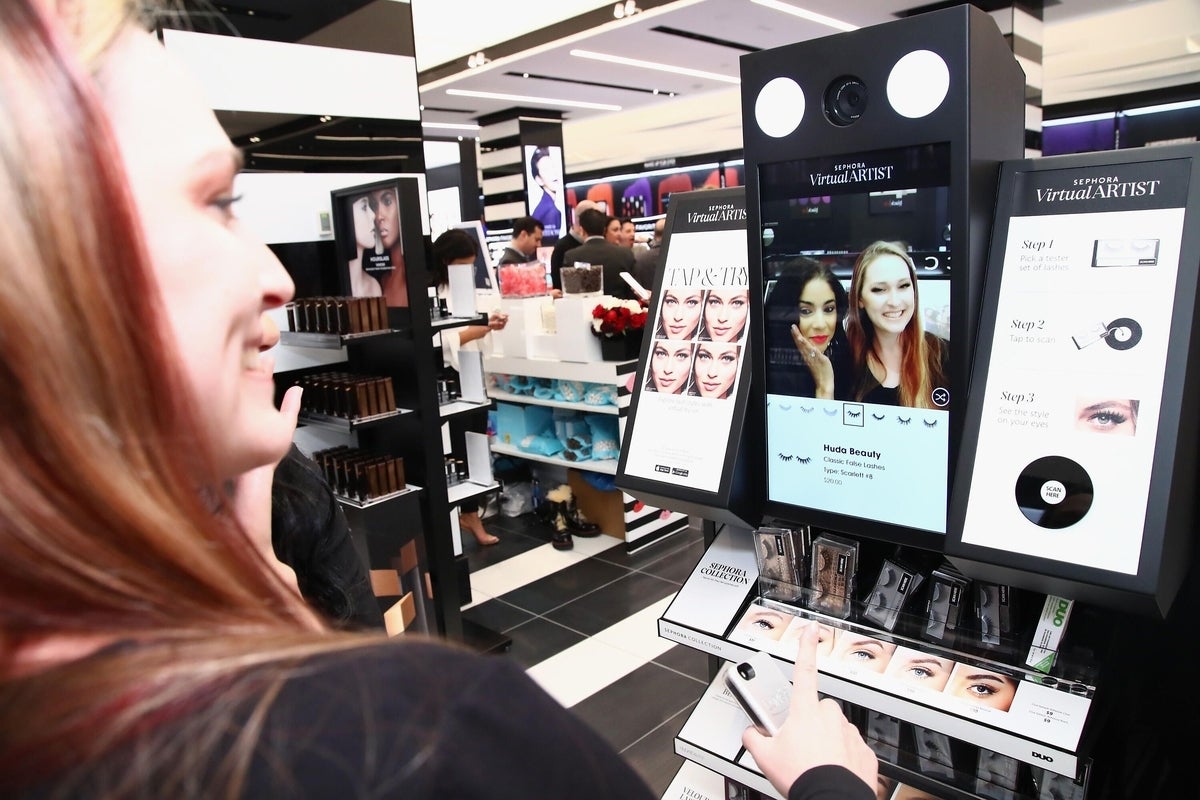
The beauty industry will likely become more and more personalized in the coming years, Aarabi said. “If you walk into a Sephora five or ten years from now, every aspect of your experience, from what you see to the products you are recommended will be customized based on your face shape, your sales history, and your preferences,” Aarabi said. “That personalization will really make life easier for shoppers. But it’s also better for beauty brands, because they can increase conversions by making sure their products are relevant to each shopper on a personalized level.”
Many companies in non-technical spheres are becoming digitally aware and proficient, said Brian Solis, an analyst at Altimeter. However, most are advancing very slowly.
“Sephora is among the most advanced and advancing retailer and beauty companies that I’ve studied over the years,” Solis said. And the actual technology is only part of this approach.
“Sephora is also diversifying its approach to digital transformation by focusing on the areas where other companies are struggling,” Solis said. “Specifically, the company has studied digital customers to understand her needs and beauty and social aspirations, how she feels and shops, and more, so they adapted models, processes, and resources internally to compete with purpose.”
The company has also recognized that its customers are not done evolving, Solis said; hence, the importance of the Innovation Lab to keep up on the latest consumer trends and technological innovations. The lab sponsors a Think Tank program, which grooms the next generation of leaders in the company and allows them to develop ideas and pitch them to the management team. It also oversees Idea Central, a program that sources ideas from employees nationwide in both stores and headquarters to get new ideas for ways to make the shopping experience better.
“We’re trying to foster a lot of innovation within the company as a whole,” Laughton said. “We definitely want people with different perspectives and backgrounds.”
SEE: Digital transformation: A CXO’s guide (ZDNet special report) | Download the report as a PDF (TechRepublic)
Consumer expectations are driving the success or failure of organizations today, said Forrester analyst Brendan Witcher. “They’re the ones determining, ‘I want to buy where I want, when I want, pay the price I want, get the information I want, and get it delivered to me in the form and format that I want. If you don’t, I’ll find someone who does,'” Witcher said. “And we have never had that before, because we’ve never had so much technology in the customer’s hands.”
Sephora has digitized its entire business strategy, Witcher said, with its in-store, in-app, and online solutions all providing value. “Sephora is still one of the few companies that has an actual dedicated part of their website where you can go in and personalize the experience for yourself,” Witcher said. “They are creating dialogues with customers, not monologues. And those dialogues–whether it be in store, on the app, or online–are what helps Sephora understand their customers better, and then deliver the kinds of experiences that not only meet but exceed customer expectations.”
Digital transformation advice
Many retailers today understand that they need to transform, but face difficulties creating a vision and a plan for doing so to improve business practices, Witcher said.
“The biggest takeaway from Sephora as a case study is to understand that your customers have pain points in their journey, and you need to solve those specific pain points,” Witcher said. Other non-technical companies with successful digital transformation projects have done this as well. For example, Starbucks’ payment app and order-ahead feature cut down time customers spent waiting in line.
“Focusing on a key problem and solving it well is extremely important,” Aarabi said. “If you try to do too many things, it’s hard to do everything well. So focusing on one technical challenge and really getting all the experts in and doing it well usually leads to the best outcomes.”
Whatever digital project you choose to undergo, the customer’s needs must be considered first and foremost, Solis said. “I highly recommend that companies understand how consumer behaviors, preferences, expectations, and values are changing as digital impacts their life and work,” he added. “I also recommend plugging into technology and societal trends to understand what’s possible and impactful in practice.”
Executives must also empower their employees to lead digital transformation work, and escalate this work to the C-suite, so that companies can innovate instead of just respond to market trends, Solis said.
“Above all, remain focused on your consumer and their needs,” Laughton said. “If what you’re building doesn’t make their shopping experience faster or easier or more fun, it’s probably not worth the investment.”
Photo credit for hero image: Sephora
Subscribe to the Innovation Insider Newsletter
Catch up on the latest tech innovations that are changing the world, including IoT, 5G, the latest about phones, security, smart cities, AI, robotics, and more. Delivered Tuesdays and Fridays
Create a TechRepublic Account
Get the web's best business technology news, tutorials, reviews, trends, and analysis—in your inbox. Let's start with the basics.
* - indicates required fields
Sign in to TechRepublic
Lost your password? Request a new password
Reset Password
Please enter your email adress. You will receive an email message with instructions on how to reset your password.
Check your email for a password reset link. If you didn't receive an email don't forgot to check your spam folder, otherwise contact support .
Welcome. Tell us a little bit about you.
This will help us provide you with customized content.
Want to receive more TechRepublic news?
You're all set.
Thanks for signing up! Keep an eye out for a confirmation email from our team. To ensure any newsletters you subscribed to hit your inbox, make sure to add [email protected] to your contacts list.
Sephora: Influencer Marketing Case Study
"Sephora utilizes the influencer marketing platform Lefty to orchestrate impactful global influencer marketing campaigns with several partners across the world, and various international markets.”
Eva Veran, Digital Influence Project Manager, Sephora Collection
Download the full report, and see how Lefty helped Sephora Collection achieve +1013% ROI on TikTok with micro and macro influencers.
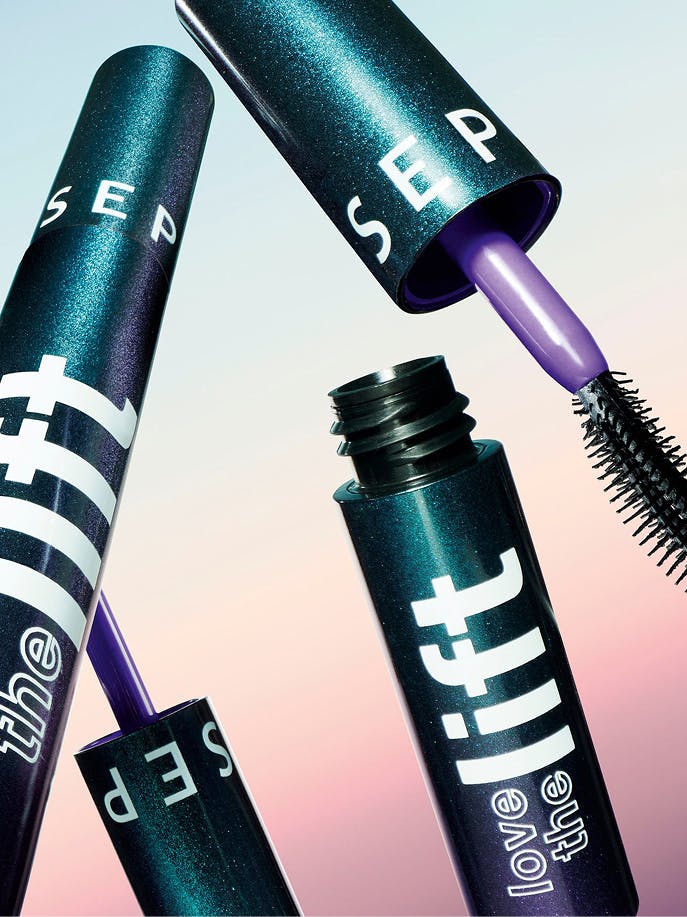
Schedule a personalized demo
Tell us a few things about yourself, and we’ll show you a lot more about us.
Learn more about the influencer industry with Lefty reports
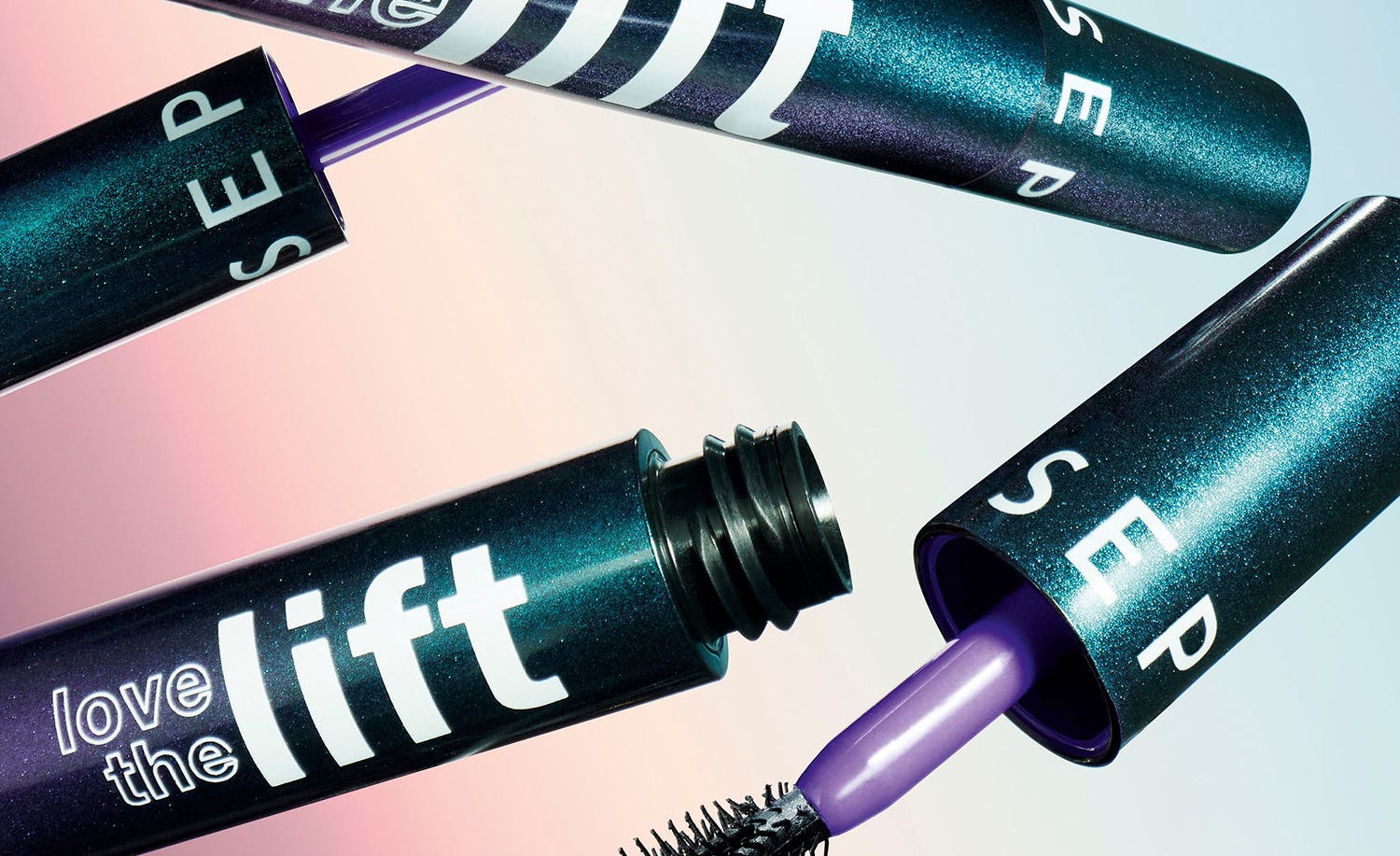
See how Lefty helped Sephora Collection achieve +1013% ROI on TikTok with micro and macro influencers.
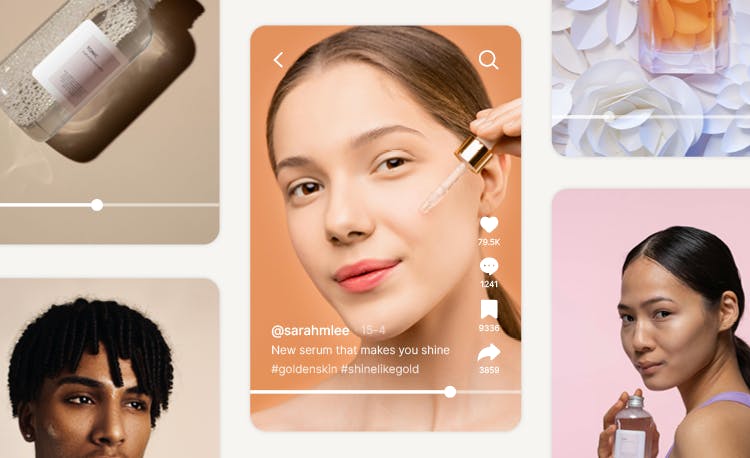
The Evolving Media Landscape of Beauty Brands
Unlock TikTok's Potential: How Beauty Brands Can Leverage 5x More Impressions Than Instagram

AW24 Fashion Week Roundup
The Autumn/Winter 2024 season hit over half a billion in media value. What were the most impactful moments?

Influencer marketing case study for Sephora on Narrators
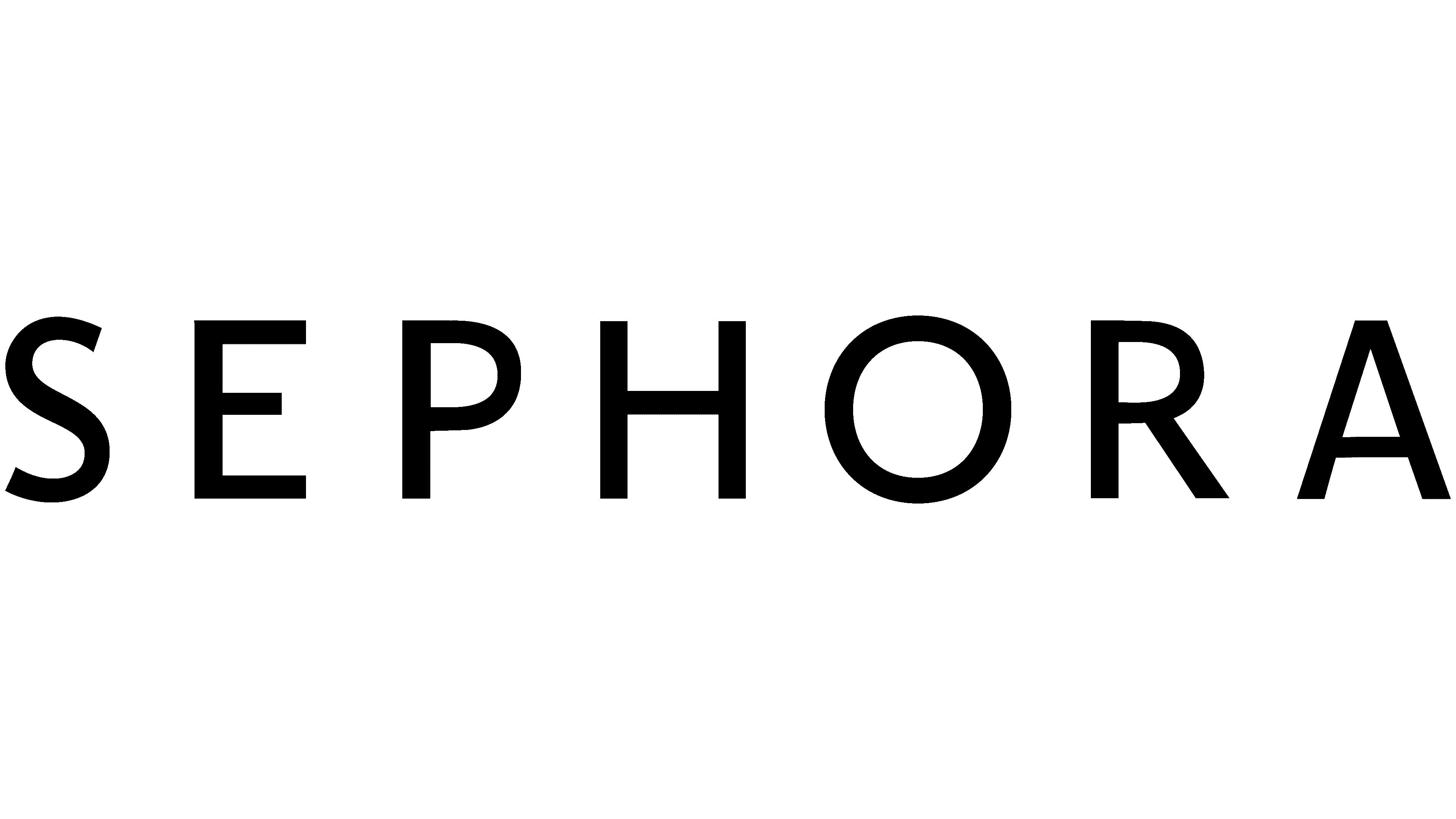
Campaign Brief
The giant beauty retailer Sephora partnered with Narrators to execute a regional influencer campaign in Singapore, Malaysia and Hong Kong. The campaign goal was to drive brand awareness and engagement to create a welcoming beauty shopping experience for all and inspire fearlessness in Sephora’s community.
Nb of influencers 27
Total reach 1.8m, engagement 85 k.

Pernod Ricard

We are an AI-powered influencer marketing platform with a database of 1.5M influencers across Asia.
- Brands & Agencies
- Influencers
- Case Studies
- Terms of Use
- Privacy Policy
- Data Update & Suppression
Download Narrators App

Copyright © 2024 All rights reserved
Made with ❤ by one9social pte ltd.
Sephora Ramadan Souq reaches millions across the region.
Lift in Brand Awareness
Incremental Reach over TV the highest amongst social platforms
Lift in Ad Awareness
Most cost-efficient of all platforms on lifting awareness and claimed purchase
+9 points lift in purchase intent, +5.6% add-to-cart statistically significant lift (ksa).
Sephora: a gifting destination in the season of giving
During Ramadan, consumers seek meaningful brand engagement, and Sephora’s mission was to highlight their identity as the gifting destination in the most disruptive way during this highly competitive period.
To do so, Sephora teamed-up with a local artist to design a culturally-relevant shopping experience highlighting the art of gifting. They also leveraged their POP-UP in-store takeover across the region, launched a video campaign around beauty celebration and offered unique product collections.
A 360 shopping journey through Content & Snap AR Lenses
To increase the impact of its campaign, Sephora partnered with Snapchat and chose a multi-format approach to bring their in-store experience to life through Snap’s AR Lenses and Content.
In addition, Sephora presented a seamless creative journey through influencer storytelling, product education and awareness.
Multiple solutions for multiple successes
Opting to use a multi-format approach and to benefit from the power of AR Lenses , Sephora achieved outstanding results with +12 points increase in brand awareness , a +5.6% increase in Add-to-Cart in KSA , +14 points increase in ad awareness and more.
Snapchat can help your business grow.

Sephora History Case Study – Everything You Need To Know
- Written by 440 Industries
- Case Study , Sephora
- February 9, 2022

Sephora is a famous beauty brand that has captured the hearts of millions of beauty shoppers worldwide. This company is also expanding around the globe and is available in several countries. The brand offers different beauty products from high-end beauty brands and makes them accessible to users even before purchasing. This brand is considered one of the best specialty beauty retailers in the beauty industry and shows no sign of slowing down. In this article, we’ll explore Sephora history and features of the brand you need to know.
Sephora History – How It All Started
One of the reasons Sephora is so successful is the brand’s ability to adapt over the years. They have made significant changes over the years, and that’s why it’s essential to take a look at the brand’s history. Dominique Mandonnaud founded Sephora in France in 1970. He was a painter and sculptor who got his first job as a soap seller in his parents’ store. Not long after, he decided to open a perfumery shop of his own. The shop was initially named Shop 8 and formed the first network of self-service perfumery stores in France. One of the acquired locations during the expansion of Shop 8 is Paris Sephora’s shop which is how the network got its new name.
A revolutionary concept contributing to this brand’s success is the self-service idea in makeup and perfumery. It became a norm in Sephora and the industry generally to offer product testers along the aisle. People used to be skeptical about buying cosmetic products because they didn’t know if they would be an ideal fit. This feature confined the industry potential before Sephora came in and changed that.
Why Sephora is a Success
Although Sephora’s history shows that the brand started with perfumery, it has expanded into different product lines over the years. The brand has also experienced significant wins in the beauty industry and is one of the leading beauty retail brands globally. One must wonder what it is about them that other brands struggle to keep up with. In this section, we’ll be exploring the top factors that contribute to Sephora’s success.
Unique Customer Loyalty Structure
One thing that differentiates Sephora from others is its approach to rewards. Although the business has a point-for-purchase model, many factors go into this. You can count on new incentives every Tuesday and Thursday in their rewards bazaar. Additionally, customers have the opportunity to browse a massive collection of available products. There are also unique collections with limited editions available only for reward members. That’s not all the customer loyalty reward program offers, as there are other perks like birthday samples, free makeovers, and many more.
It launched the Customer Loyalty Rewards Program in 2017 to provide customers with access to events in addition to the rewards listed above. The company also launched another reward program with more payment methods. The beauty brand introduced different credit card products, and the holders had access to Visa signature benefits.
Socially Responsible Brand
Sephora’s goal is to make sure that its sales are socially responsible. It took a step in this direction in 2018 when it announced the Clean Beauty category. This category features only organic and eco-friendly products free of harmful chemical ingredients. The company also launched a campaign to promote inclusivity in 2019 tagged ‘We Belong to Something Beautiful.’ Its Sephora Stands initiative focuses on three main programs: Sephora Accelerate for Women Entrepreneurs and Classes for Confidence, aimed at supporting local communities, the LGBTQ community, and cancer patients. Finally, it also includes Sephora Stands together, which focuses on Sephora employees.
While the Black Lives Matter Movement was ongoing and after the protest for the death of George Floyd, Sephora joined the 15 Percent. This movement required Sephora to dedicate 15% of its stores’ shelf space to products owned by black people. This beauty retail company was the first in the United States to take the 15 Percent Pledge.
User-Generated Content
Sephora has also become a stand for what other cosmetic brands should do with their user-generated content. Its Insider Beauty community consists of forums surrounding chats with influencers, photo galleries, and beauty tips. The platform also has other channels where they post for customers to see pictures designed to help them with their purchasing decision. This feature has helped Sephora grow. It also maintains a massive presence on varying social media platforms. It has over 15 million subscribers on its website and various social media pages.
Omni-Channel Loyalty
Whether online or in-person, Sephora has ways to retain and reward its customers. The beauty retail brand effectively advertises its loyal program on all networks to improve online sales . They also put a unique spin on its omnichannel strategy using live events. Additionally, Sephora constantly advertises beauty classes and makeover events. The Sephora platform is another top way they connect with their audience. At Sephora, influencers, celebrities, and patrons come together to discuss the happenings in beauty.
Influencer Marketing
Sephora’s influencer marketing strategy is quite different from others. This is because the brand puts most of the program’s decision-making into the hands of the influencer’s followers. At the beginning of Sephora history, the brand simply wanted 24 influencers to make up its Sephora Squad. However, the brand’s contest for the positions resulted in over 16,000 applicants. The brand tried to narrow it down by asking for testimonials from their followers and received over 250,000 from them. They valued this feedback, and they then asked the influencers and followers what their definition of beauty is and what they think is an ideal representation of beauty. Influencers chosen to be part of the Sephora brand usually receive payment and access to Sephora’s products. The beauty retail brand also offers access to resources and beauty experts.
A benefit of Sephora’s influencer marketing is that it offers a personalized experience between the influencer and the brand. It allows consumers to accept and respect the brand while still creating brand awareness and loyalty. It also helps to widen Sephora’s reach to the influencers’ loyal following. This influencer program helps meet the needs of different niche markets globally. It is a broad approach because it targets a vast number of consumers.
Sephora Marketing Mix
Sephora’s market mix analyzes the brand using the 4Ps: Product, Price, Promotion, and Placement. This mix usually helps a company position itself competitively and achieve its business goals. From Sephora history, the brand effectively uses this marketing mix to succeed in a saturated industry; let’s take a look.
Sephora Product Strategy
Sephora is a beauty retail brand that offers beauty products, skincare, and perfume lines. Additionally, its target audience is young women, predominantly those in the middle to upper class. Its product range includes over 15,000 products and features fragrances, lipsticks, skincare, makeup kits, eyeliners, and many more. Sephora also offers some services which customers can freely access. The Beauty Insider program is membership-based and allows members to access products at a discounted range. The brand also provides events and contests that customers can engage in. This Sephora product strategy helps to improve customer engagement and strengthen its position in the market through a diverse range of products.
Sephora Pricing Strategy
Sephora is one of the top beauty retail brands in the industry, and it targets the upper-middle class and the upper class of society. Although the company started out focusing on women who were beauty conscious, it now provides men’s products. The company is well-positioned as a unique and qualitative brand that offers top-quality products at affordable prices. Sephora focuses on high-end products rather than drugstore products. While its products can be pretty pricey, this brand provides promotional pricing for its customers with incentives and discounts.
Sephora Promotion Strategy
Sephora utilizes different strategies in its marketing plan. Therefore, this brand believes in promotional activities and uses various methods to create awareness in the consumer market. These promotional strategies help create a vocal chain as customers talk to their families and friends. Sephora relies heavily on the word-of-mouth publicity of its customers as it tries to foster loyalty. This process helps the brand gain an extensive client list. It also offers tutorials to visitors as a part of in-store services. With the help of several beauty consultants, Sephora partakes in contests and events. It also provides beauty talks and tips to interested customers.
Sephora also promotes its products on print media like fashion magazines and catalogs it sends to its customers. It also uses celebrities and models in its ads to appeal to an even wider audience. There are also promotional ads and campaigns run on various social media platforms to increase awareness of the brand. The brand has over 17 million followers on Facebook and 2 million on its Twitter account. Its official website provides the brand’s entire product portfolio to attract buyers.
Sephora Placement Strategy
Sephora has its headquarters in Paris, and it started expanding overseas in 1998 when it opened a store in the US. Afterward, Sephora history shows the brand also launched a store in Canada in 2004. Currently, Sephora has over 600 stores in the United States alone. This beauty retail brand also has stores in Brazil, Denmark, Turkey, Spain, Australia, Mexico, Portugal, Singapore, Malaysia, Portugal. The brand believes in creating a solid bond between itself and its consumers. Therefore, it allows users to try products before purchasing them.
You will also receive advice from skincare experts on the ideal products for you. Sephora also increased its distribution by partnering with JC Penny, a departmental store. Sephora history also showed the brand made its products available online in 1999. Currently, Sephora boasts over 2000 stores in thirty-three countries.
Final Thoughts
Sephora is arguably the number one beauty retail brand globally, and it’s all due to how they’re different from other brands in the industry. This brand success portrays that providing customers with a different shopping experience that appeals to them will improve sales and brand awareness. This brand utilizes creative marketing strategies to reach an engaged society and turn customers into brand advocates. The beauty retail brand continues to grow despite Sephora history, and there’s a reason for that. The brand utilizes all the right loyalty and marketing strategy to increase its customer base. This insightful article provides you with everything you need to know about the brand to help your business grow.
Was This Article Helpful?
You're never to cool to learn new things, here are sources for further research.
Please note: 440 Industries is a participant in the Amazon Services LLC Associates Program, an affiliate advertising program designed to provide a means for sites to earn advertising fees by advertising and linking to Amazon.com.
Fashion Marketing
Retail marketing, fashion entrepreneurship, fashion finance.
MORE ARTICLES FROM OUR BLOG

Diesel Case Study: Fashion Industry’s Sustainable Revolution
Explore the Diesel Case Study: fashion industry’s sustainable shift through cleaner engines, innovative campaigns, and Smart Rebels focus.

The OTB Group Case Study: Core Values and Growth Strategies
Discover The OTB Group Case Study, highlighting core values, growth strategies, sustainability efforts, and digital innovation in the fashion world.

Jil Sander Case Study: Fashion Legacy & Adaptations
Explore the Jill Sander Case Study, delving into her minimalist fashion legacy and how creative directors Lucie and Luke Meier adapt to market changes.

Marni Case Study: Bold Fashion and Diverse Collaborations
Explore the Marni Case Study, highlighting bold fashion, diverse collaborations, and innovative digital expansion in this captivating analysis.

440 Industries Disclaimer, Credits and acknowledgements. Privacy Policy
Copyright © 440 industries 2024.


- Stay Youthful

Understanding Gen-Z & Gen Alpha
- Stay Youthful Blog

Sephora Collection Campus Rep Program
Sephora Collection (SC), Sephora's very own beauty brand, called on campus reps to connect with a new audience of consumers, shift student price perception, and increase brand advocacy.
Launch a digital strategy that amplified key campaigns + products
Host in-store events that encourage first-hand product interaction, create on-campus touchpoints to showcase the sc brand personality.
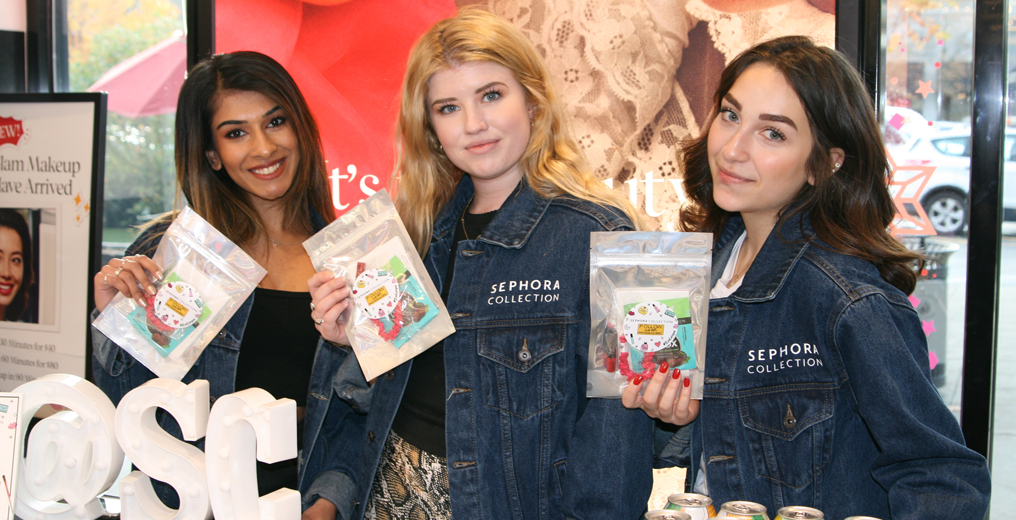
SC product sales during in-store events
Instagram impressions on campus rep content
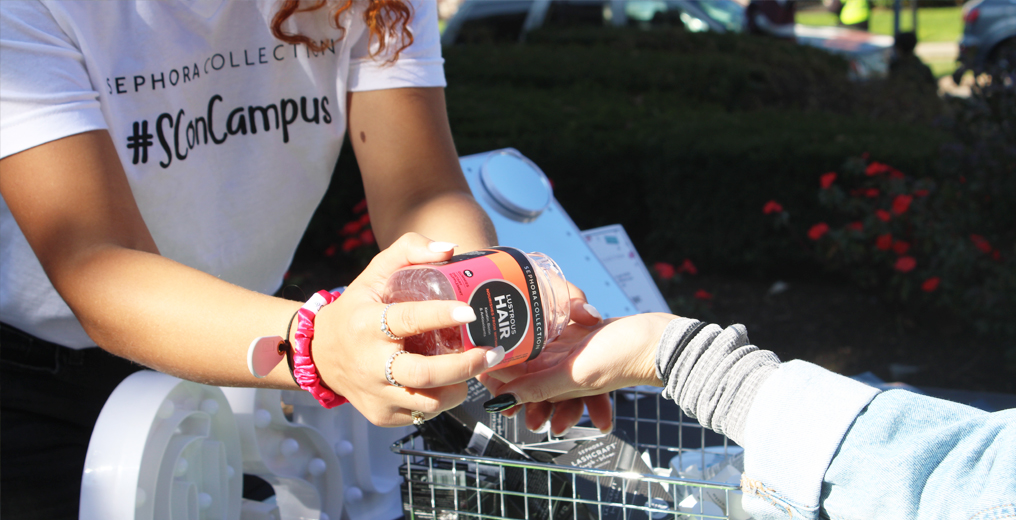
Unique live student interactions
More Case Studies

Levi’s
Levi's College Student Influencer Program
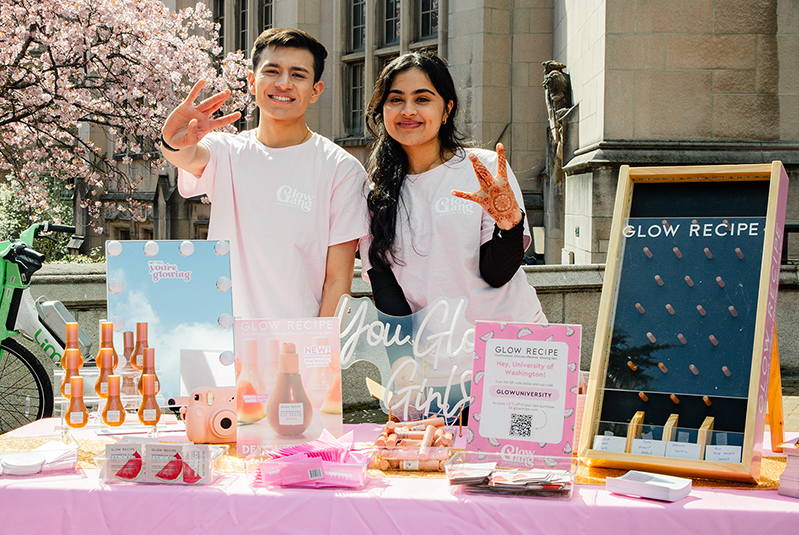
Glow Recipe
Glow Gang University Ambassador Program
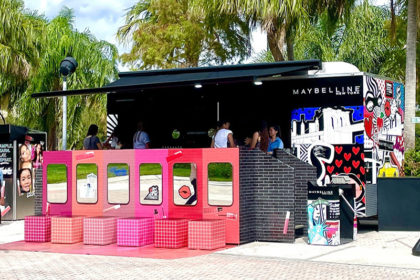
Maybelline Press Play Pop-Up Tour
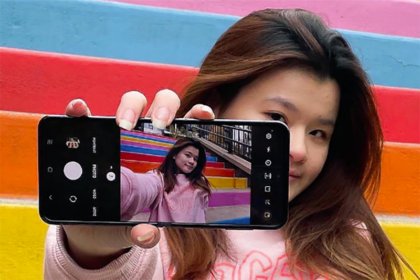
College Marketing Program

Beyond Yoga
Campus Pop-Up Events
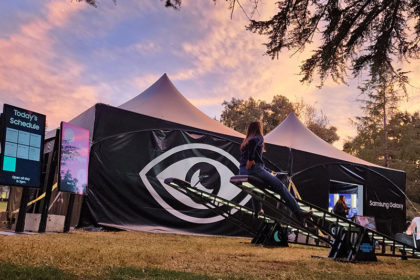
Into The Night Tour
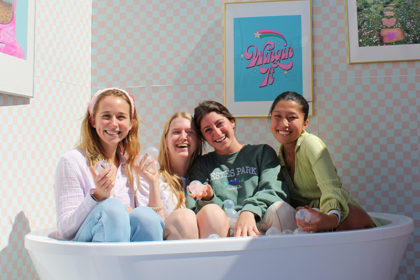
Back-to-School Pop-Up Events
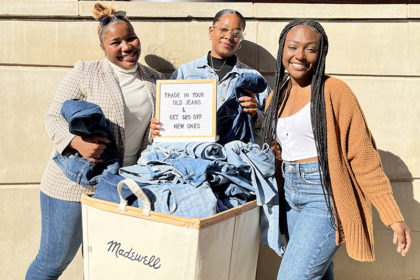
College Ambassador Program
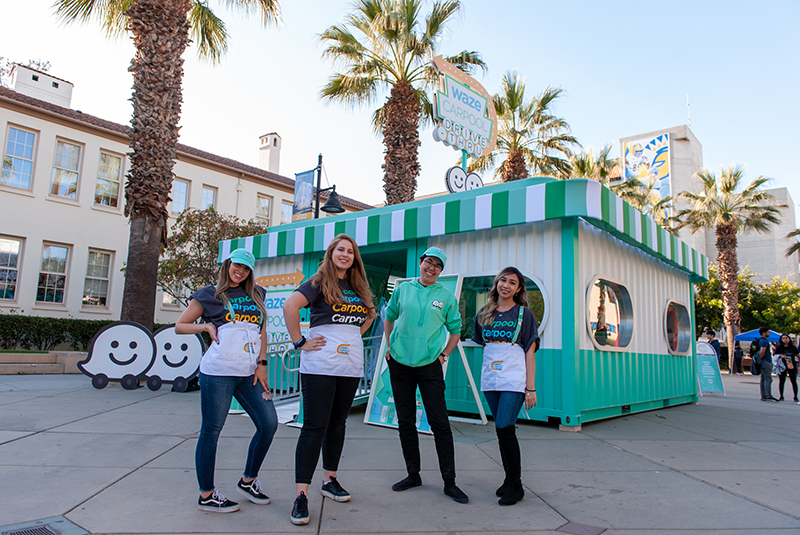
VaxForward Student Campaign
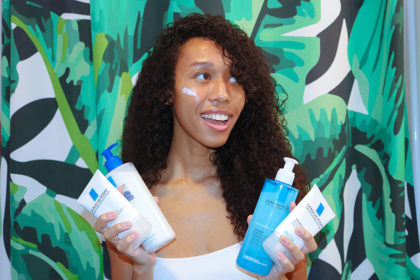
La Roche-Posay
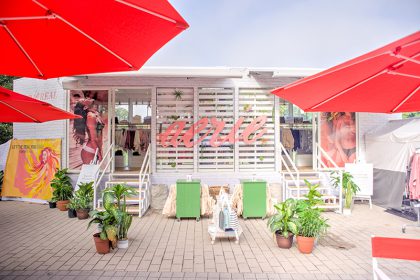
#AerieREAL Mobile Pop-Up
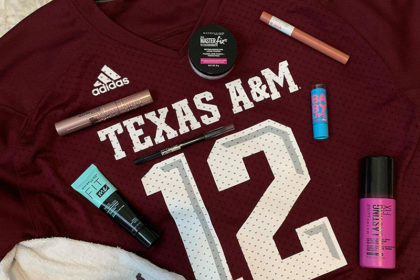
Digital Creators

Kate Spade New York
TikTok Creators

NYX Cosmetics
Summer State-of-Mind Pop-Up Series
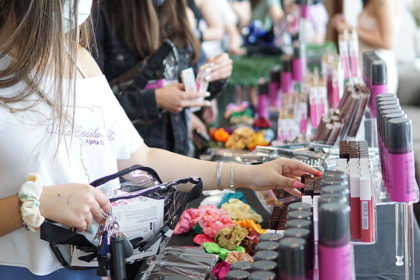
Campus Activations
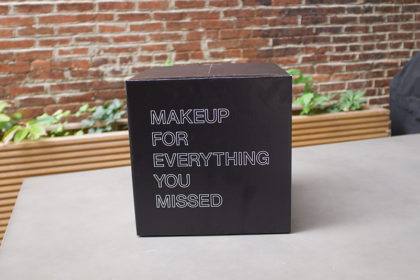
Student Sampling

Community Ambassador Program
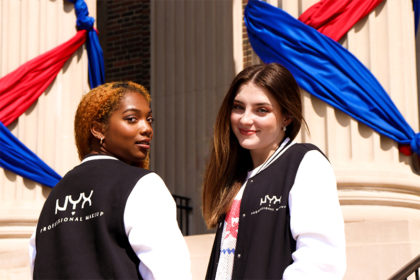
U.S. Campus Crash
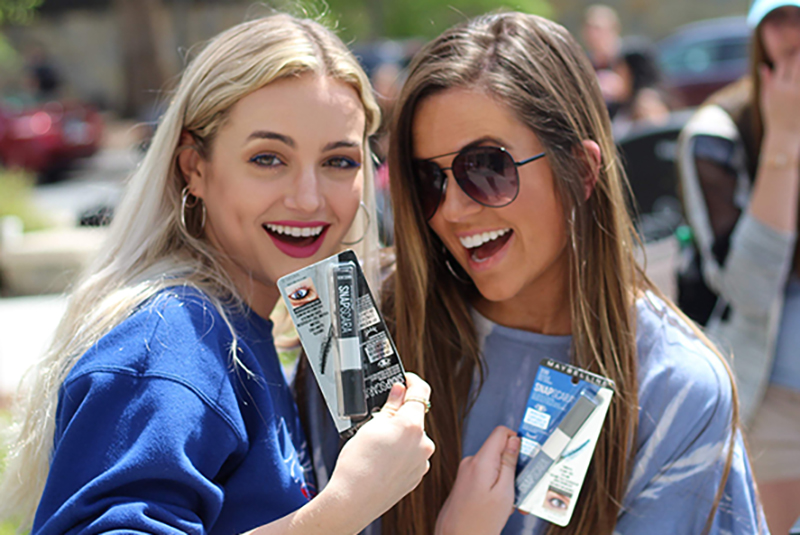
#AerieREAL Brand Ambassadors
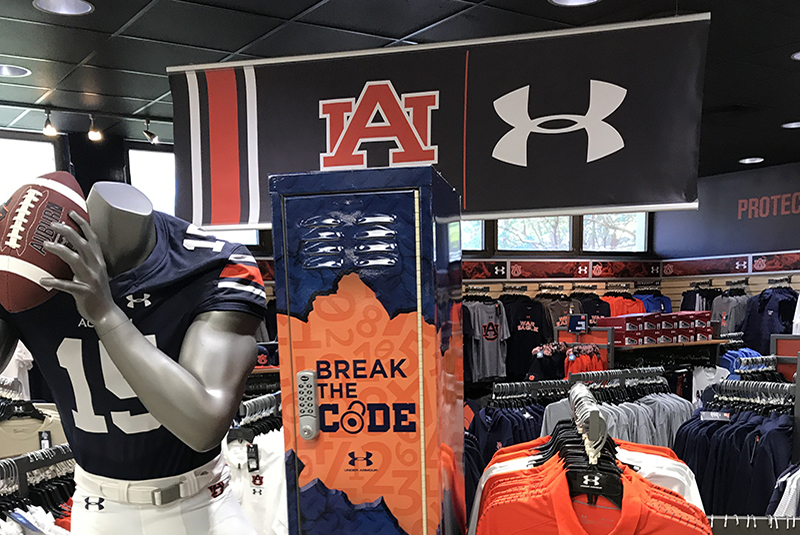
Under Armour
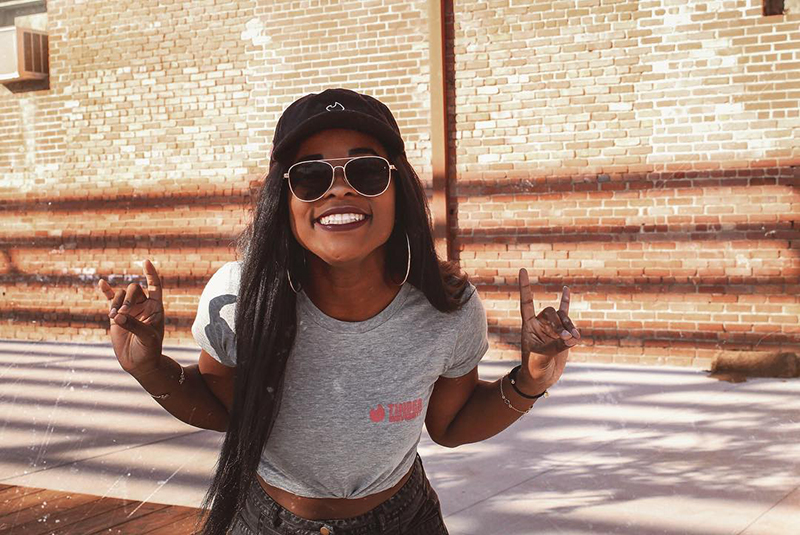
Tinder U College Social Influencers
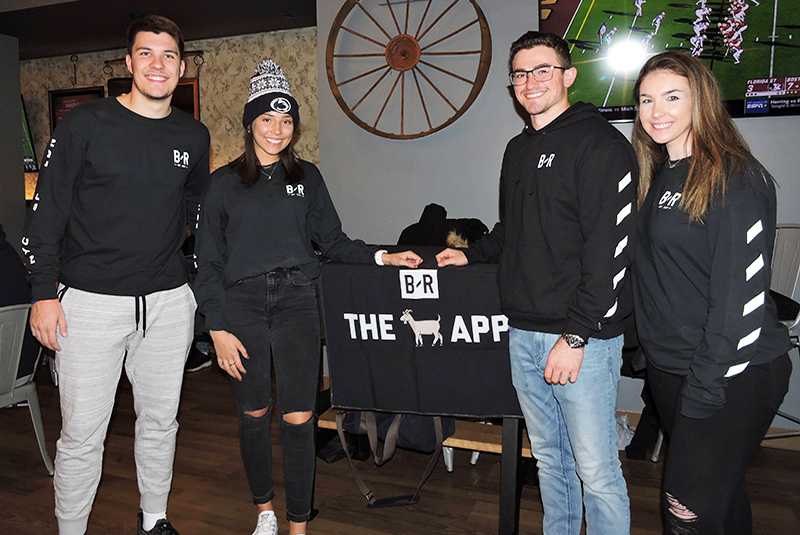
Bleacher Report
#BRSqaudU College Social Influencers
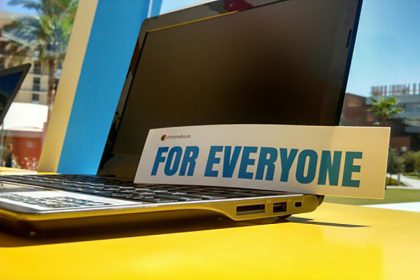
Chromebook Campus Tour
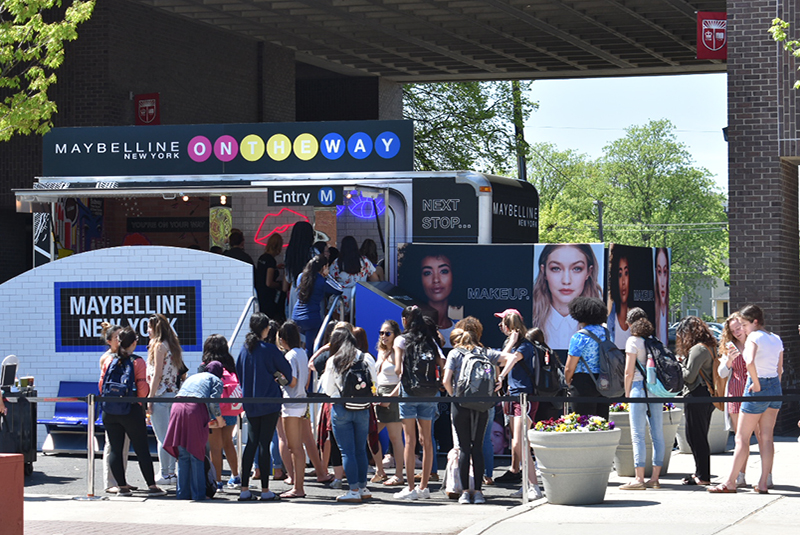
College Campus Pop-Up Tour
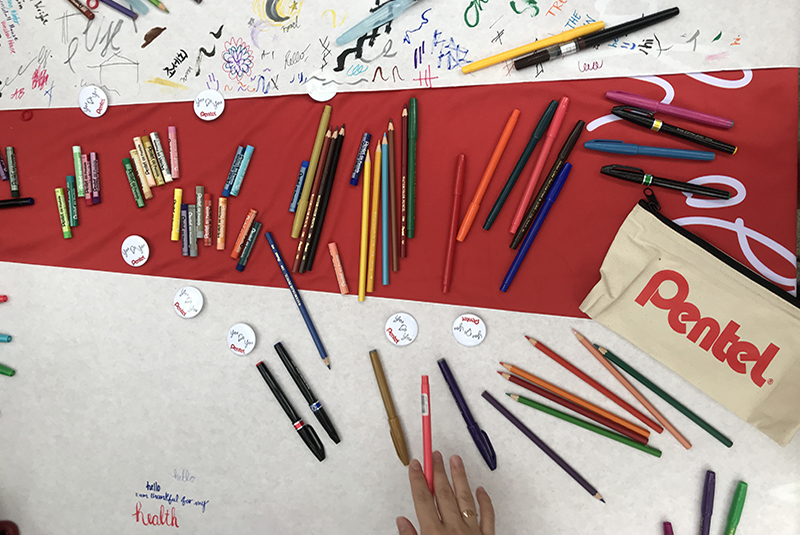
Ralph Lauren
Polo Campus Ambassador Program
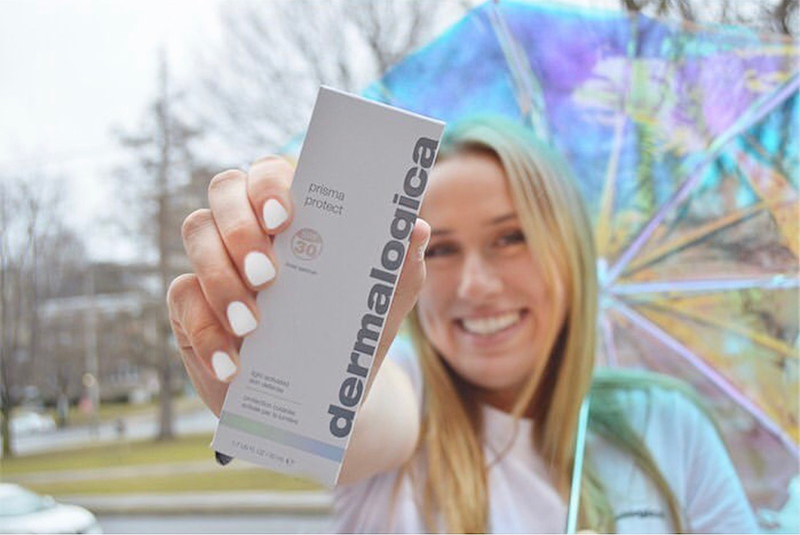
Dermalogica
College Campus Ambassadors

College Street Team
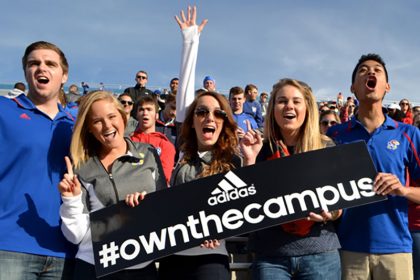
#OwnTheCampus College Program

Campus Ambassador Program
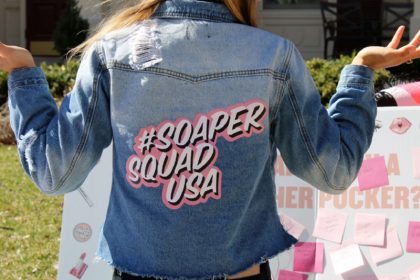
Soap & Glory

#AerieREAL College Ambassadors
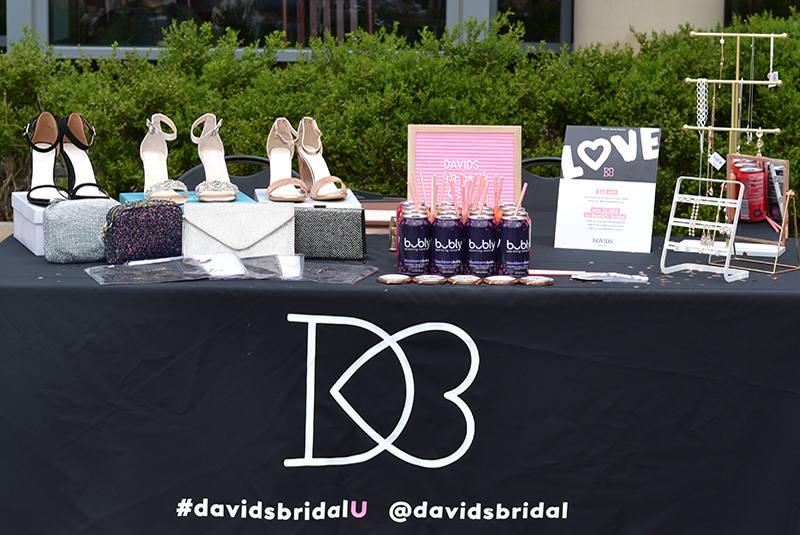
David’s Bridal
Collegiate Style Influencers

Capital One: C.O.D.A.
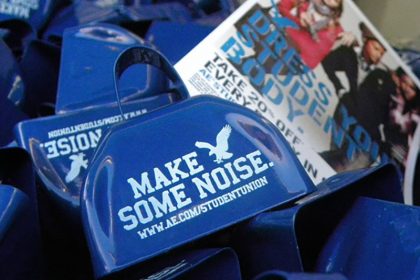
American Eagle Outfitters
AE Student Union
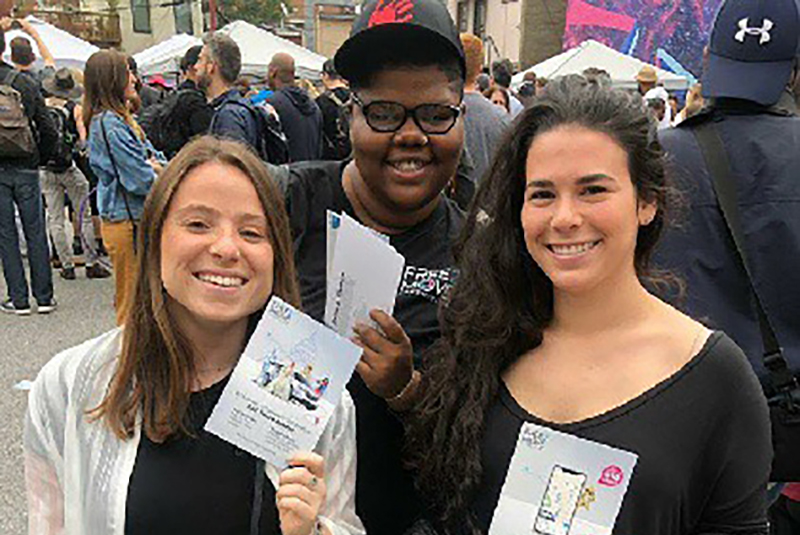
DC Market Street Teams
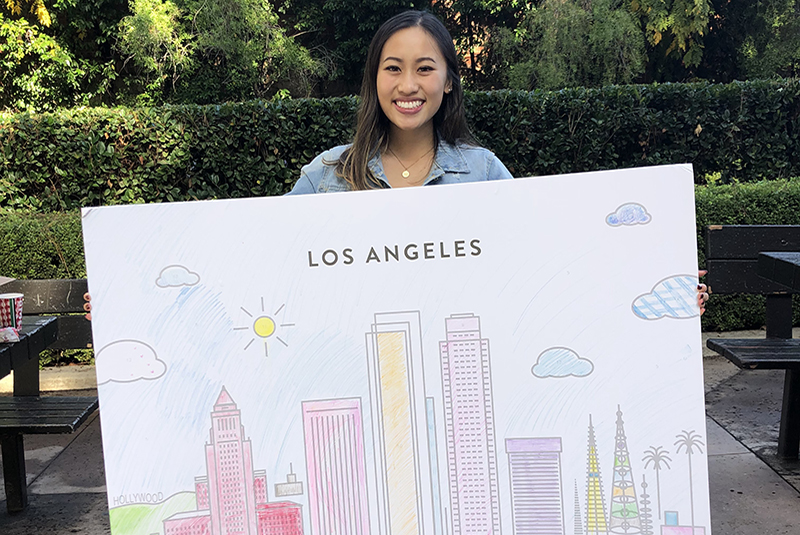
Original Penguin
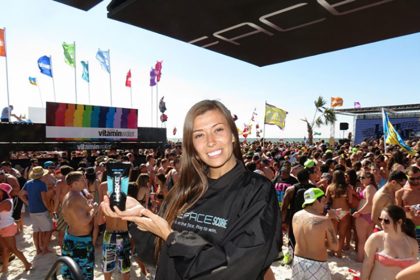
AXE Face Spring Break
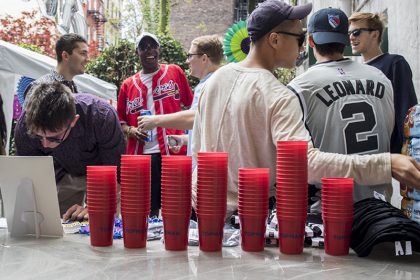
Spring Break Production
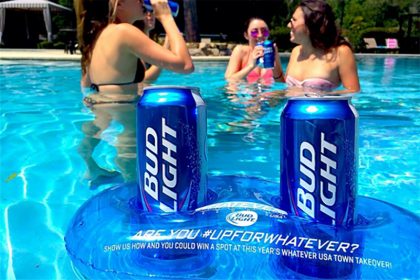
#UpForWhatever College Market Program

#ExpressU Collegiate Program

Capital One
Start-Up Competition

AE Spring Break

Market Retail Store Support
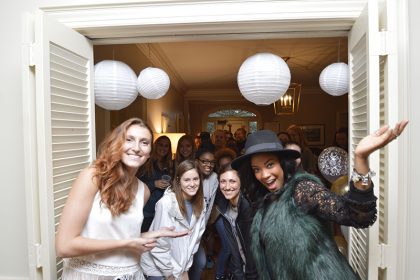
Jessica Simpson

Harry’s
Campus Ambassadors

Vince Camuto
#VConCampus College Marketing

Spring Break Takeover

Spring Break Fun
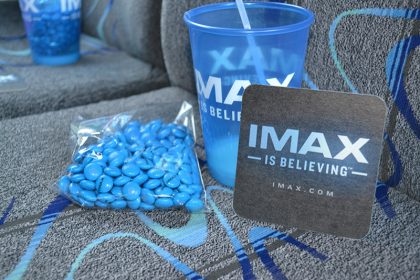
#IMAXisBelieving College Program
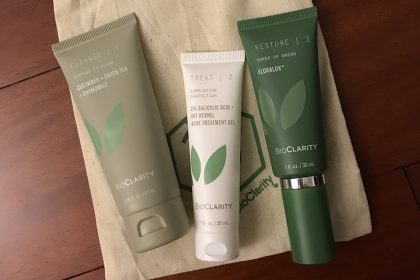
#ClarityCrewU College Ambassador Program

College Scholarship Sweepstakes
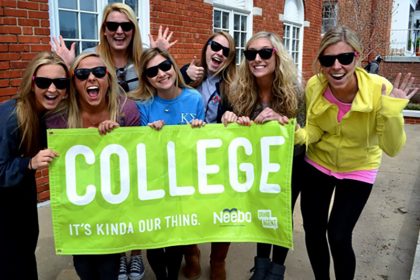
Bookstore College Marketing

Reward Yourself Spring Break

College No Money Money Challenge

Spring Break Marketing Campaign
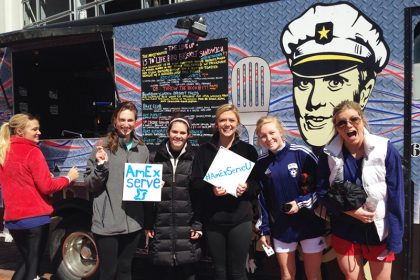
American Express
AMEX Serve Campus Program

Kiss Cosmetics
imPRESS Spring Break Makeover

Apples to Apples College Marketing
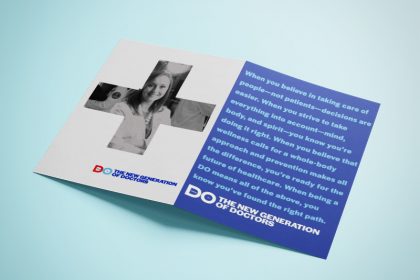
American Association of Colleges of Osteopathic Medicine
Choose DO Student Engagement Program

Law School Ambassador Program

Jeep/Dodge/Fiat Campus Tour
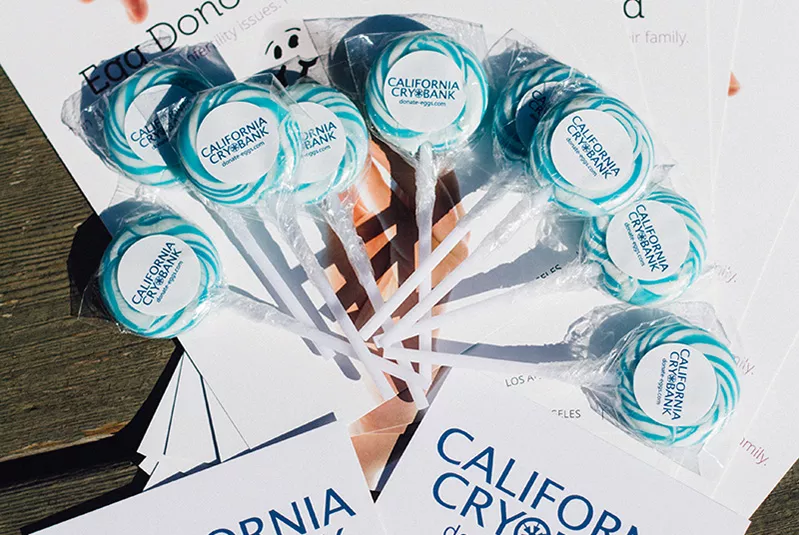
California Cryobank
Women's Health Ambassador Program

Student Travel Team
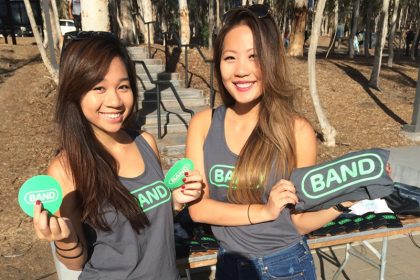
BAND Together on Campus
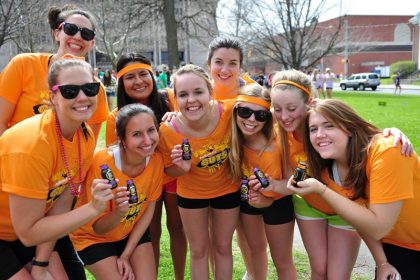
Street King Campus Marketing

College Honor Society Partnership

Rockstar Energy Drink
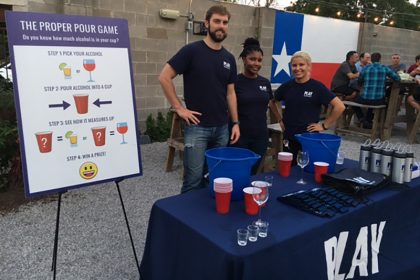
Responsibility.org
Young Adult Engagement Campaign
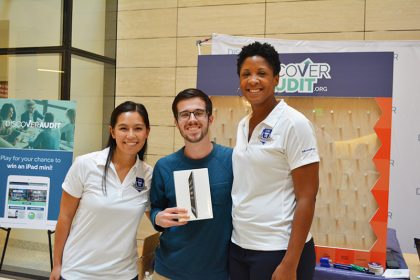
The Center for Audit Quality
Discover Audit Student Engagement

College Campus Marketing

"The 9" Takes Spring Break

PrepMatters
Marketing Consulting Engagement

Spring Break Content Production

U.S. Campus Marketing Program

Seinfeld Campus Tour
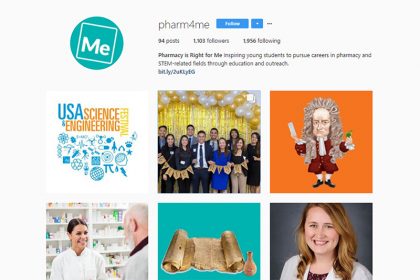
American Association of Colleges of Pharmacy
Pharmacy is Right for Me

College Partnership Program
- For Small Business
The 5 Best Messaging Apps for Marketing in 2024
- May 12, 2024
- by steven-austin

Messaging apps have evolved into full-fledged digital platforms reaching billions of users worldwide. According to eMarketer, the global number of messaging app users will reach 3.6 billion by 2024 – nearly half the world‘s population. For brands, these apps represent an unparalleled opportunity to meet customers where they are and build personalized, contextual experiences at scale.
But messaging apps aren‘t one-size-fits-all. Each major player has distinct strengths, features and user bases requiring tailored strategies. In this article, we‘ll dive deep into the top five messaging apps for marketing in 2024, providing data-driven insights and real-world examples to help you harness their power.
1. WhatsApp
With over 2 billion active users worldwide, WhatsApp is the undisputed king of messaging apps. It‘s the most widely used app in 112 countries, according to SimilarWeb‘s 2020 analysis. WhatsApp dominates in emerging markets like India, Brazil, Mexico and Indonesia, making it essential for global brands.
- 2 billion monthly active users worldwide
- 100 billion messages sent daily
- 98% open rate and 45-60% click-through rate for WhatsApp Business messages
- Average user checks app 23 times per day
Top Features for Marketers
- WhatsApp Business API for chatbots, notifications and user initiated conversations
- Catalogs and collections to showcase products
- Verification badges to establish brand trust
- End-to-end shopping and payment via Facebook Shops integration
Mini Case Study
KLM Royal Dutch Airlines uses WhatsApp to provide fliers real-time updates on flight status, boarding passes, and airport info. During the pandemic, the airline also used WhatsApp to handle rebookings and cancellations, resolving over 100,000 customer inquiries.
2. Facebook Messenger
Facebook‘s messaging app is a close second to WhatsApp with over 1.3 billion users. Its strength is the robust Messenger Platform, which offers an array of tools for building interactive chatbots, automating FAQs, facilitating transactions, and integrating with core business systems.
- 1.3 billion monthly active users worldwide
- 20 billion messages sent between brands and users monthly
- 56% of users would rather message a business than call
- 2 min average response time vs. 11 hours for email
- Messenger API for Instagram to manage chats across apps
- Lead generation and appointment booking templates
- Sponsored messages for targeted outreach and retargeting
- AR effects and mini-games for interactive experiences
Sephora‘s Messenger chatbot offers personalized beauty advice, how-to guides and product recommendations based on short quizzes. Users can book makeovers at nearby stores, watch tutorial videos, read ratings and reviews, and add items to their carts. The experience feels like messaging a knowledgeable friend.
Often called a "super-app", WeChat is central to digital life in China. It‘s far more than a basic messaging tool, with built-in features for social networking, mobile payments, e-commerce, news, entertainment and everyday services like booking doctor‘s appointments or hailing a taxi.
- 1.29 billion monthly active users, mostly in China
- 780 million daily active users
- 72% use WeChat for purchases and 40% for daily payments
- Average user spends 82 minutes per day in-app
- Official Accounts for content marketing and customer service
- Mini Programs (sub-apps) for games, services and e-commerce
- Moments ads and precision targeting via behavioral and social data
- WeChat Pay for frictionless in-app purchasing
Luxury brand Cartier launched a WeChat Mini Program for its pop-up exhibition in Shanghai. Users could virtually try on exclusive products, learn about Cartier‘s history, and buy limited-edition items via WeChat Pay. The experience attracted over 200,000 visitors and sold out items within a week.
4. Snapchat
Snapchat remains a major player, particularly among younger users, with its playful and creative features like augmented reality lenses, Bitmoji avatars and ephemeral content. 300+ million people use Snapchat daily, generating over 5 billion Snaps.
- 300+ million DAUs worldwide
- 75% of users engage with AR daily
- 62% of US users are under 30
- 35% of US users shop on Snapchat
- Sponsored lenses and filters for immersive branding
- Collection ads with AR try-on and integrated commerce
- Dynamic product ads from uploaded catalogs
- Story ads with custom branded tiles in user Discover feeds
To launch its new Impossible Whopper, Burger King partnered with Snap on an AR portal lens effect. Users could "burn" competitor ads to reveal a coupon for a free sandwich. The lens reached over 20 million users and achieved an average play time of 24 seconds – the highest ever for a Snap brand lens.
5. Telegram
Telegram has emerged as a major messaging force, reaching over 500 million active users in 2021. Its open-source architecture, robust privacy features and group chat tools have made it popular for personal and business use cases.
- 500+ million monthly active users worldwide
- Users in 200+ countries, with strong adoption in Europe/Asia
- 50+ million daily active users
- Up to 200K members per group and unlimited channel subscribers
- Bot platform with tools for e-commerce, games and services
- Channels for broadcasting to unlimited subscribers
- Robust privacy with server-client encryption and self-destructing messages
- Seamless sync and file-sharing across devices
Online marketplace AliExpress uses Telegram as a complement to its website and app. Customers can search products, track orders, get automated support and access exclusive deals via the AliExpress Telegram channel and bot – creating an end-to-end experience within the messaging UI.
Putting the Pieces Together
So which messaging apps should you prioritize for your brand? The answer depends on your goals, target audience and geographic focus.
Generally, WhatsApp and Messenger are smart bets for their sheer scale and feature richness. If you‘re targeting youth, Snapchat is a strong choice. For brands in China, WeChat is table stakes. And Telegram is worth testing for its highly engaged user base and open platform.
The most successful messaging strategies balance reach and relevance. Start by analyzing your audience‘s app preferences and behaviors. Then craft experiences that feel native to each platform by taking full advantage of APIs and developer tools.
Messaging is inherently conversational and one-to-one, so be helpful and human in your approach. Use chatbots and automation to scale responsiveness while preserving the personal touch. Take advantage of rich features like audio, video, AR and payments to deliver real utility and value.
Finally, see messaging apps as an opportunity to shift from one-off campaigns to always-on experiences. By becoming a trusted messaging partner, you can transform customers into loyal advocates and communities.
The future of marketing is conversational – and it‘s already happening inside the messaging apps your customers use every day. With the right strategy and a test-and-learn mindset, your brand can join the conversation and unlock incredible value. As messaging apps continue to add users and features at a breathtaking pace, that opportunity will only grow.

10 Customer Segments Examples and Their Benefits

- May 9, 2024
Now that companies can segment buyers, the days of mass marketing are behind us. Customer segmentation offers various benefits for marketing, content creation, sales, analytics teams and more. Without customer segmentation, your personalised marketing efforts may fall flat.
According to the Twilio 2023 state of personalisation report , 69% of business leaders have increased their investment in personalisation. There’s a key reason for this — customer retention and loyalty directly benefit from personalisation. In fact, 62% of businesses have cited improved customer retention due to personalisation efforts. The numbers don’t lie.
Keep reading to learn how customer segments can help you fine-tune your personalised marketing campaigns. This article will give you a better understanding of customer segmentation and real-world customer segment examples. You’ll leave with the knowledge to empower your marketing strategies with effective customer segmentation.
What are customer segments?
Customer segments are distinct groups of people or organisations with similar characteristics, needs and behaviours. Like different species of plants in a garden, each customer segment has specific needs and care requirements. Customer segments are useful for tailoring personalised marketing campaigns for specific groups.
Personalised marketing has been shown to have significant benefits — with 56% of consumers saying that a personalised experience would make them become repeat buyers .
Successful marketing teams typically focus on these types of customer segmentation:

- Geographic segmentation: groups buyers based on their physical location — country, city, region or climate — and language.
- Purchase history segmentation: categorises buyers based on their purchasing habits — how often they make purchases — and allows brands to distinguish between frequent, occasional and one-time buyers.
- Product-based segmentation: groups buyers according to the products they prefer or end up purchasing.
- Customer lifecycle segmentation: segments buyers based on where they are in the customer journey. Examples include new, repeat and lapsed buyers. This segmentation category is also useful for understanding the behaviour of loyal buyers and those at risk of churning.
- Technographic segmentation: focuses on buyers’ technology preferences, including device type, browser type, and operating system.
- Channel preference segmentation: helps us understand why buyers prefer to purchase via specific channels — whether online channels, physical stores or a combination of both.
- Value-based segmentation: categorises buyers based on their average purchase value and sensitivity to pricing, for example. This type of segmentation can provide insights into the behaviours of price-conscious buyers and those willing to pay premium prices.
Customer segmentation vs. market segmentation
Customer segmentation and market segmentation are related concepts, but they refer to different aspects of the segmentation process in marketing.
Market segmentation is the broader process of dividing the overall market into homogeneous groups. Market segmentation helps marketers identify different groups based on their characteristics or needs. These market segments make it easier for businesses to connect with new buyers by offering relevant products or new features.
On the other hand, customer segmentation is used to help you dig deep into the behaviour and preferences of your current customer base. Marketers use customer segmentation insights to create buyer personas. Buyer personas are essential for ensuring your personalised marketing efforts are relevant to the target audience.
10 customer segments examples
Now that you better understand different customer segmentation categories, we’ll provide real-world examples of how customer segmentation can be applied. You’ll be able to draw a direct connection between the segmentation category or categories each example falls under.
One thing to note is that you’ll want to consider privacy and compliance when you are considering collecting and analysing types of data such as gender, age, income level, profession or personal interests. Instead, you can focus on these privacy-friendly, ethical customer segmentation types:
1. Geographic location (category: geographic segmentation)
The North Face is an outdoor apparel and equipment company that relies on geographic segmentation to tailor its products toward buyers in specific regions and climates.
For instance, they’ll send targeted advertisements for insulated jackets and snow gear to buyers in colder climates. For folks in seasonal climates, The North Face may send personalised ads for snow gear in winter and ads for hiking or swimming gear in summer.
The North Face could also use geographic segmentation to determine buyers’ needs based on location. They can use this information to send targeted ads to specific customer segments during peak ski months to maximise profits.
2. Preferred language (category: geographic segmentation)
Your marketing approach will likely differ based on where your customers are and the language they speak. So, with that in mind, language may be another crucial variable you can introduce when identifying your target customers.
Language-based segmentation becomes even more important when one of your main business objectives is to expand into new markets and target international customers — especially now that global reach is made possible through digital channels.
Coca-Cola’s “Share a Coke” is a multi-national campaign with personalised cans and bottles featuring popular names from countries around the globe. It’s just one example of targeting customers based on language.
3. Repeat users and loyal customers (category: customer lifecycle segmentation)
Sephora, a large beauty supply company, is well-known for its Beauty Insider loyalty program.
It segments customers based on their purchase history and preferences and rewards their loyalty with gifts, discounts, exclusive offers and free samples. And since customers receive personalised product recommendations and other perks, it incentivises them to remain members of the Beauty Insider program — adding a boost to customer loyalty.
By creating a memorable customer experience for this segment of their customer base, staying on top of beauty trends and listening to feedback, Sephora is able to keep buyers coming back.

4. New customers (category: customer lifecycle segmentation)
Subscription services use customer lifecycle segmentation to offer special promotions and trials for new customers.
HBO Max is a great example of a real company that excels at this strategy:
They offer 40% savings on an annual ad-free plan, which targets new customers who may be apprehensive about the added monthly cost of a recurring subscription.
This marketing strategy prioritises fostering long-term customer relationships with new buyers to avoid high churn rates.
5. Cart abandonment (category: purchase history segmentation)
With a rate of 85% among US-based mobile users, cart abandonment is a huge issue for ecommerce businesses. One way to deal with this is to segment inactive customers and cart abandoners — those who showed interest by adding products to their cart but haven’t converted yet — and send targeted emails to remind them about their abandoned carts.
E-commerce companies like Ipsy, for example, track users who have added items to their cart but haven’t followed through on the purchase. The company’s messaging often contains incentives — like free shipping or a limited-time discount — to encourage passive users to return to their carts.
Research has found that cart abandonment emails with a coupon code have a high 44.37% average open rate.
6. Website activity (category: technographic segmentation)
It’s also possible to segment customers based on website activity. Now, keep in mind that this is a relatively broad approach; it covers every interaction that may occur while the customer is browsing your website. As such, it leaves room for many different types of segmentation.
For instance, you can segment your audience based on the pages they visited, the elements they interacted with — like CTAs and forms — how long they stayed on each page and whether they added products to their cart.
Matomo’s Event Tracking can provide additional context to each website visit and tell you more about the specific interactions that occur, making it particularly useful for segmenting customers based on how they spend their time on your website.
Try Matomo for Free
Get the web insights you need, while respecting user privacy.
No credit card required
Amazon segments its customers based on browsing behaviour — recently viewed products and categories, among other things — which, in turn, allows them to improve the customer’s experience and drive sales.
7. Traffic source (category: channel segmentation)
You can also segment your audience based on traffic sources. For example, you can determine if your website visitors arrived through Google and other search engines, email newsletters, social media platforms or referrals.
In other words, you’ll create specific audience segments based on the original source. Matomo’s Acquisition feature can provide insights into five different types of traffic sources — search engines, social media, external websites, direct traffic and campaigns — to help you understand how users enter your website.
You may find that most visitors arrive at your website through social media ads or predominantly discover your brand through search engines. Either way, by learning where they’re coming from, you’ll be able to determine which conversion paths you should prioritise and optimise further.
8. Device type (category: technographic segmentation)
Device type is customer segmentation based on the devices that potential customers may use to access your website and view your content.
It’s worth noting that, on a global level, most people (96%) use mobile devices — primarily smartphones — for internet access. So, there’s a high chance that most of your website visitors are coming from mobile devices, too.
However, it’s best not to assume anything. Matomo can detect the operating system and the type of device — desktop, mobile device, tablet, console or TV, for example.
By introducing the device type variable into your customer segmentation efforts, you’ll be able to determine if there’s a preference for mobile or desktop devices. In return, you’ll have a better idea of how to optimise your website — and whether you should consider developing an app to meet the needs of mobile users.
9. Browser type (category: technographic segmentation)
Besides devices, another type of segmentation that belongs to the technographic category and can provide valuable insights is browser-related. In this case, you’re tracking the internet browser your customers use.
Many browser types are available — including Google Chrome, Microsoft Edge, Safari, Firefox and Brave — and each may display your website and other content differently.
So, keeping track of your customers’ preferred choices is important. Otherwise, you won’t be able to fully understand their online experience — or ensure that these browsers are displaying your content properly.

10. Ecommerce activity (category: purchase history, value based, channel or product based segmentation)
Similar to website activity, looking at ecommerce activity can tell your sales teams more about which pages the customer has seen and how they have interacted with them.
With Matomo’s Ecommerce Tracking , you’ll be able to keep an eye on customers’ on-site behaviours, conversion rates, cart abandonment, purchased products and transaction data — including total revenue and average order value.
Considering that the focus is on sales channels — such as your online store — this approach to customer segmentation can help you improve the sales experience and increase profitability.
Start implementing these customer segments examples
With ever-evolving demographics and rapid technological advancements, customer segmentation is increasingly complex. The tips and real-world examples in this article break down and simplify customer segmentation so that you can adapt to your customer base.
Customer segmentation lays the groundwork for your personalised marketing campaigns to take off. By understanding your users better, you can effectively tailor each campaign to different segments.
If you’re ready to see how Matomo can elevate your personalised marketing campaigns, try it for free for 21 days . No credit card required.
21 day free trial. No credit card required.

7 Best Marketing Attribution Software in 2024

11 of the Most Effective Conversion Rate Optimisation Best Practices

What Is Ethical SEO & Why Does It Matter?
Subscribe to our newsletter to receive regular information about Matomo. You can unsubscribe at any time from it. This service uses MadMimi. Learn more about it within our privacy Policy page.
A powerful web analytics platform that gives you and your business 100% data ownership and user privacy protection.
No credit card required.
Free forever.
Newsletter Subscription - English

IMAGES
COMMENTS
Sephora, the global beauty retailer with over 2700 stores in 35 countries, has established itself as a leader in the industry through its innovative marketing strategies.In this case study, we dive into Sephora's marketing strategy for 2024, analyzing their successful campaigns and digital dominance.
In this case study, we take a deep-dive into Sephora's omnichannel marketing strategy and examine how the blend of in-store experiences with digital platforms has transformed the customer journeys and sustained Sephora's growth strategy. Table of Contents. The History of Sephora. The key success factors that drive Sephora's growth strategy.
What elevates Sephora's digital and mobile customer experience strategies to a truly inspirational level is their obvious understanding that customers look to technology (and adopt it) when it makes their lives easier . In a recent case study, Sephora's Director of Mobile & Digital Store Marketing described their customers as: "women who ...
In this case study, we take a deep-dive into Sephora's omnichannel marketing strategy and examine how the blend of in-store experiences with digital platforms has transformed the customer ...
Beauty brands, like Sephora, who are staying in touch with all the latest marketing trends and tactics have seen an explosive growth in their brand value and yearly revenue. Sephora is currently worth a crazy $37.2 billion with, 962k followers on YouTube. 13.9 million followers on Instagram. 17 million likes on Facebook.
It is clear that Sephora has embraced "digital innovation" with regard to its marketing and customer engagement experience. Specifically, it's focus on chatbots is a reflection of push ...
The offline experience: Sephora's in-store retail tech. Sephora's management team has made it clear that while digital is a crucial part of the company's strategy, it must serve Sephora's core purpose of unlocking its clients' beauty potential. "Consumers are looking for retail stores to be creative spaces.
29 April 2021. Loading... Today, Sephora is synonymous with luxury beauty, generating more than an estimated $10 billion in annual sales across 2,000 stores in 35 countries, making it one of the most successful multi-brand retailers in the world. The retailer has managed to consistently disrupt the beauty market with its assisted self-service ...
1X. Once upon a time, in the dazzling world of beauty products, there was a company that discovered the secret to success - and it didn't involve fairy godmothers or magic wands. This is the story of how Sephora leveraged its community-led growth strategy to transform itself from an ordinary cosmetics retailer into an enchanting global ...
According to Mary Beth Laughton, EVP of Omni Retail, "omnitude" is Sephora's secret ingredient. "It's about creating an attitude and a mindset around putting the consumer at the center of everything," she said on a recent episode of the NRF's Retail Gets Real podcast. "We coined this term 'omnitude,' and it's this idea ...
What elevates Sephora's digital customer experience strategies to a truly inspirational level is their obvious understanding that customers look to technology and adopt it when it makes their lives easier. With around 1,750 retail stores in 30 countries, Sephora has made "useful technology" a central part of its brand.
Sephora does not want to give its customers that untouchable impression. Instead, it has adopted a strategy of an honest and open two-way conversation. The meaning and commitment behind Sephora's tagline, "Let's beauty together," permeates across its marketing and pays off big in customer loyalty.
As retailers ramp up artificial intelligence adoption to aid everything from customer service to product development, Katie Groody—senior research specialist for Beauty US at Gartner For Marketers—talks about Sephora's use of A.I. to serve you the personalized site content you want. The Two-Minute Case Study series presents bite-sized ...
Further, in Sephora's Innovation Lab, launched in 2015, a team of executives hired from the marketing, product development, and technology industries source, develop, evaluate, test, and ...
Sephora is a French visionary beauty-retail concept founded in 1970 by Dominique Mandonnaud. Sephora's unique, open-sell environment features an ever-increasing amount of classic and emerging brands across a broad range of product categories. These include skincare, makeup, fragrance, body, and hair care — in addition to its own private label.
Overcoming Global Influencer Marketing Campaign Hurdles. Sephora Collection faced several challenges while managing a global influencer campaign. One of the main obstacles was catering to diverse market needs, which made standardization complex because different regions required customized approaches. Monitoring organic engagement was more ...
Digital marketing as a mechanism to pursue the digital transformation-Case study of Sephora. The influence of augmented reality on consumers' online purchase intention : The Sephora Virtual Artist ...
Sephora: Influencer Marketing Case Study. "Sephora utilizes the influencer marketing platform Lefty to orchestrate impactful global influencer marketing campaigns with several partners across the world, and various international markets.". Eva Veran, Digital Influence Project Manager, Sephora Collection. Download the full report, and see how ...
Campaign Brief. The giant beauty retailer Sephora partnered with Narrators to execute a regional influencer campaign in Singapore, Malaysia and Hong Kong. The campaign goal was to drive brand awareness and engagement to create a welcoming beauty shopping experience for all and inspire fearlessness in Sephora's community.
A 360 shopping journey through Content & Snap AR Lenses. To increase the impact of its campaign, Sephora partnered with Snapchat and chose a multi-format approach to bring their in-store experience to life through Snap's AR Lenses and Content. In addition, Sephora presented a seamless creative journey through influencer storytelling, product ...
Case Study, Sephora. February 9, 2022. Sephora is a famous beauty brand that has captured the hearts of millions of beauty shoppers worldwide. This company is also expanding around the globe and is available in several countries. The brand offers different beauty products from high-end beauty brands and makes them accessible to users even ...
Situation YMC cultivated a community of passionate and influential students to promote the Sephora Collection brand and to create authentic content using SC products. In addition to driving new customer acquisition, the in-store events amplified SC's voice and drove a significant amount of sales. On-campus tactics reinforced love for the SC ...
Mini Case Study. Sephora's Messenger chatbot offers personalized beauty advice, how-to guides and product recommendations based on short quizzes. Users can book makeovers at nearby stores, watch tutorial videos, read ratings and reviews, and add items to their carts. The experience feels like messaging a knowledgeable friend. 3. WeChat
Customer segmentation offers various benefits for marketing, content creation, sales, analytics teams and more. Without customer segmentation, your personalised marketing efforts may fall flat. According to the Twilio 2023 state of personalisation report, 69% of business leaders have increased their investment in personalisation.